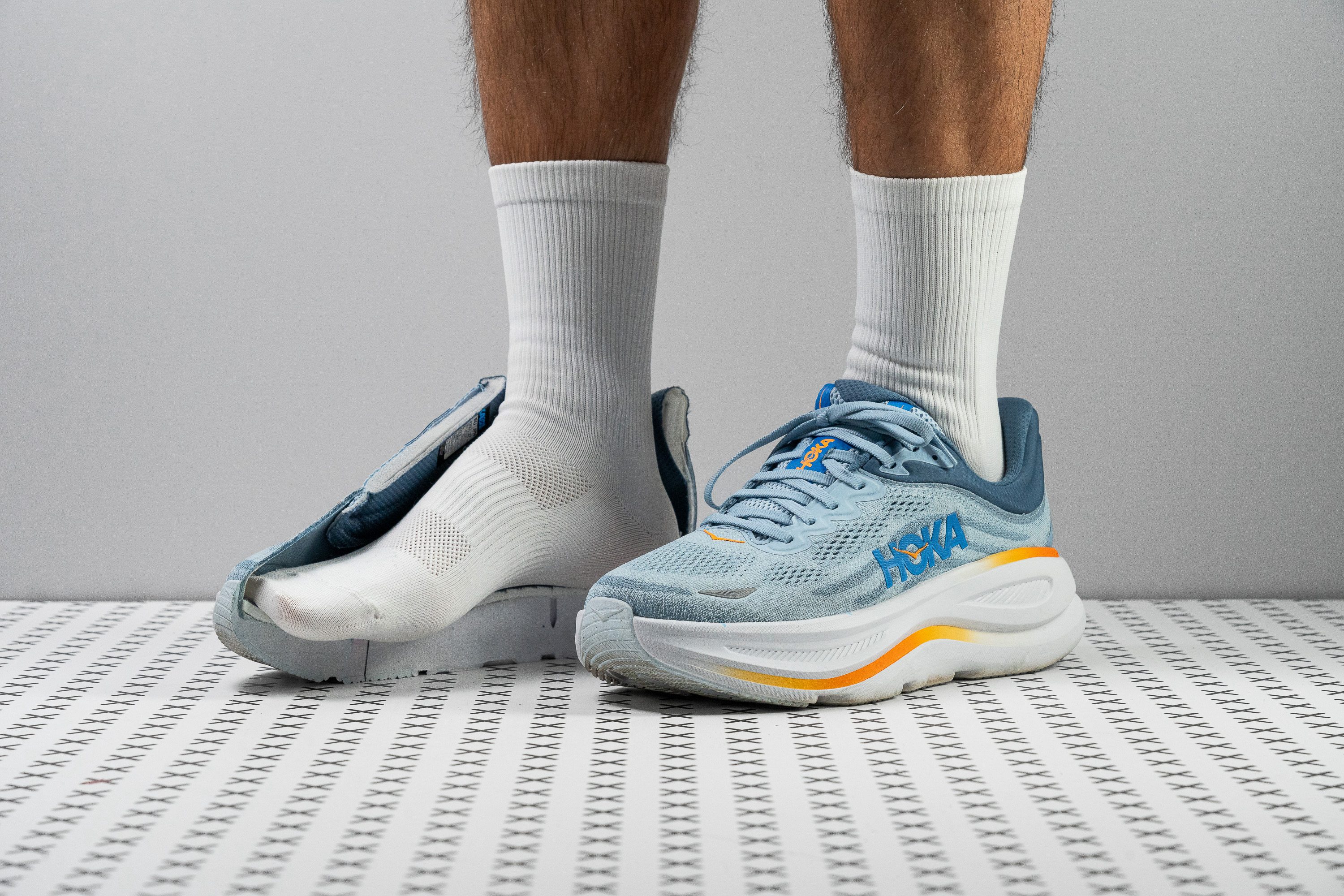Our verdict
- Top pick in best running shoes for plantar fasciitis
- Top pick in best Hoka running shoes
Pros
- Endless cushioning
- New supercritical EVA midsole
- Amazing step-in comfort
- Doubles as a walking shoe
- Stable for its height
- Built to last
- Excels at slow-and-steady paces
- Well-designed heel collar
- Lighter than v8
Cons
- Not for wide feet
- Still feels heavy and clunky underfoot
- Drop measurement differs from stated
- Non-gusseted tongue
Audience verdict
- Top 18% in road running shoes
- Top 7% in Hoka running shoes
- Top 1% most popular running shoes
Comparison
The most similar running shoes compared
+ + Add a shoe | |||||
|---|---|---|---|---|---|
| Audience score | 90 Superb! | 89 Great! | 91 Superb! | 83 Good! | |
| Price | £160 | £160 | £170 | £185 | |
| Pace | Daily running | Daily running | Daily running | Daily running | |
| Shock absorption | High | High | High | Moderate | |
| Energy return | Moderate | Moderate | Moderate | Moderate | |
| Traction | High | High | High | Moderate | |
| Arch support | Neutral | Neutral | Neutral | Neutral | |
| Weight lab Weight brand | 10.7 oz / 303g 10.5 oz / 297g | 9.9 oz / 282g 10 oz / 283g | 10.3 oz / 291g 10.3 oz / 292g | 11.4 oz / 322g 11.7 oz / 333g | |
| Drop lab Drop brand | 9.1 mm 5.0 mm | 8.7 mm 5.0 mm | 9.6 mm 8.0 mm | 8.6 mm 8.0 mm | |
| Strike pattern | HeelMid/forefoot | HeelMid/forefoot | HeelMid/forefoot | HeelMid/forefoot | |
| Size | True to size | True to size | True to size | True to size | |
| Midsole softness | Balanced | Soft | Soft | Soft | |
| Difference in midsole softness in cold | Small | Normal | Big | Small | |
| Toebox durability | Good | Decent | Decent | Decent | |
| Heel padding durability | Good | Good | Decent | Decent | |
| Outsole durability | Good | Good | Decent | Good | |
| Breathability | Moderate | Breathable | Moderate | Moderate | |
| Width / fit | Medium | Medium | Medium | Medium | |
| Toebox width | Medium | Narrow | Medium | Medium | |
| Stiffness | Moderate | Stiff | Stiff | Moderate | |
| Torsional rigidity | Stiff | Stiff | Stiff | Stiff | |
| Heel counter stiffness | Moderate | Stiff | Moderate | Stiff | |
| Rocker | ✓ | ✗ | ✓ | ✓ | |
| Heel lab Heel brand | 41.3 mm 43.0 mm | 39.3 mm 39.0 mm | 42.9 mm 47.0 mm | 38.8 mm 38.0 mm | |
| Forefoot lab Forefoot brand | 32.2 mm 38.0 mm | 30.6 mm 34.0 mm | 33.3 mm 39.0 mm | 30.2 mm 30.0 mm | |
| Widths available | NormalWideX-Wide | NormalWide | Normal | Normal | |
| Orthotic friendly | ✓ | ✓ | ✓ | ✓ | |
| Season | All seasons | SummerAll seasons | All seasons | All seasons | |
| Removable insole | ✓ | ✓ | ✓ | ✓ | |
| Ranking | #62 Top 17% | #113 Top 31% | #31 Top 9% | #268 Bottom 27% | |
| Popularity | #1 Top 1% | #117 Top 32% | #136 Top 37% | #291 Bottom 21% |
Who should buy
After testing the Bondi 9 in the lab and on the roads, we concluded that:
- It stays true to its comfort-oriented DNA, ensuring fans of previous Bondis won’t be disappointed.
- Hoka really set out to create a cushion-loaded powerhouse, and it fully delivers—making it perfect for slow paces and long runs.
- Those seeking a premium shoe for casual running and walking with maximum underfoot foam will love the Bondi 9.
- Its snug, locked-in toebox makes it an excellent choice for those with narrow feet.
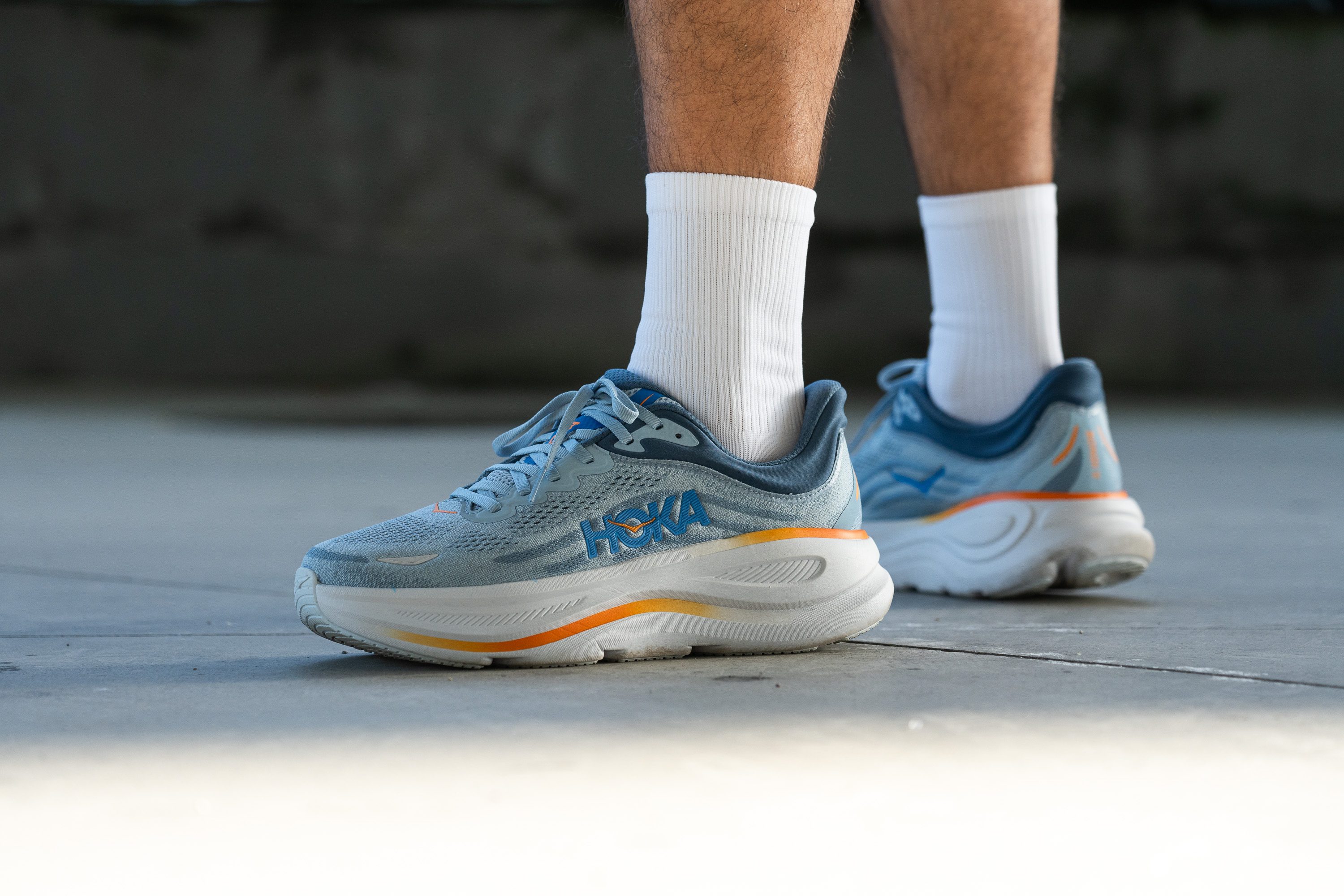
Who should NOT buy
From our perspective, the Bondi 9 isn’t the best option for runners hoping for a roomy toebox. It remains best suited for those with narrow or average feet. If you have wider feet, we recommend the Altra VIA Olympus 2 or the Topo Atmos—both feature a foot-shaped toebox and ample underfoot cushioning.
Additionally, we believe that those wanting a more versatile ride will likely be frustrated by the Bondi’s bulky, slow-moving feel. If you’re after a daily trainer that still provides plush comfort but feels much lighter, the Hoka Mach 6 or the ASICS Novablast 5 are far better (and cheaper) alternatives.
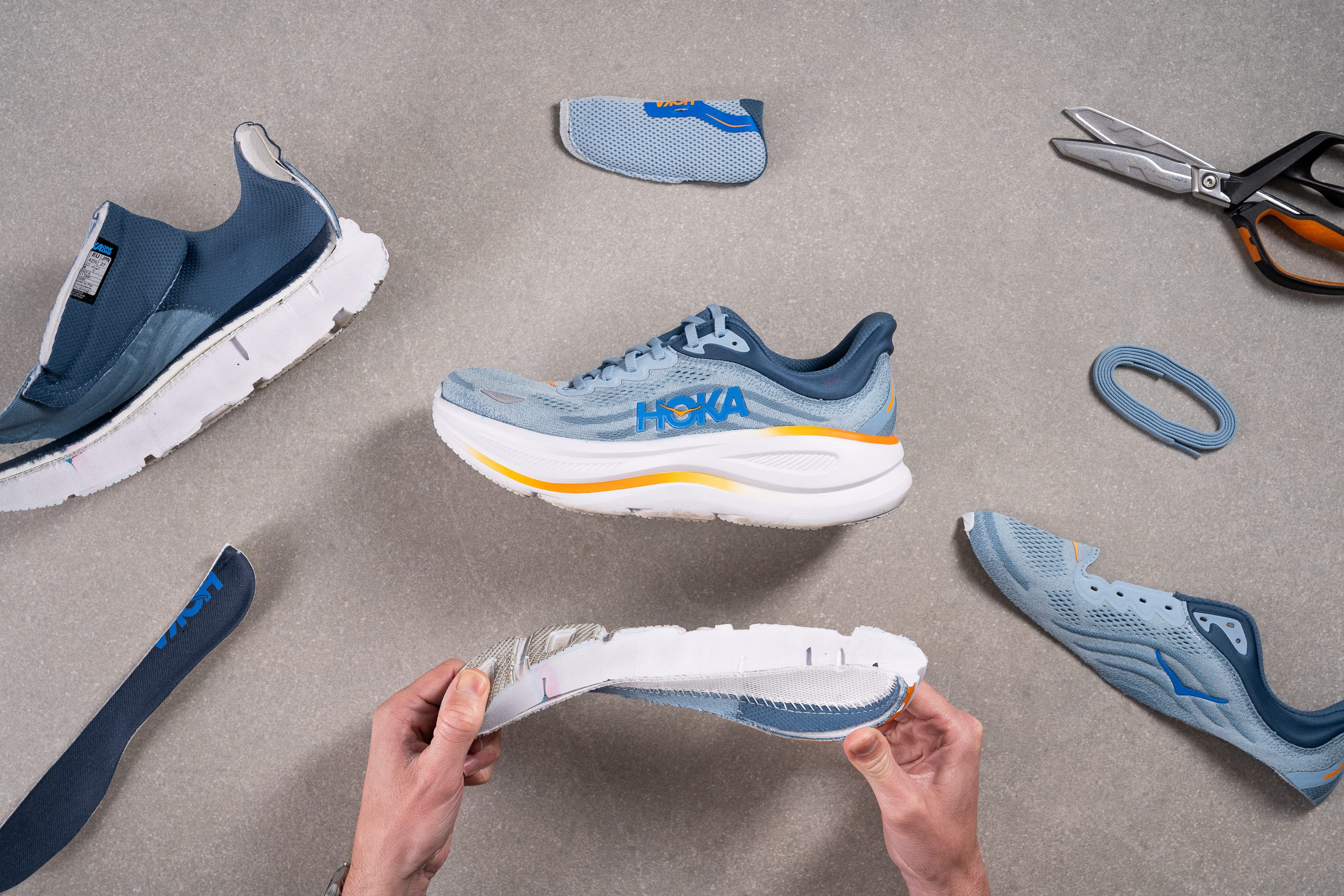
Cushioning
Shock absorption
The Bondi has always had that ultra-cushioned look, but now it finally lives up to it with standout numbers. We measured 146 SA in the heel and 133 SA in the forefoot, both impressive results for anyone seeking maximum underfoot protection.
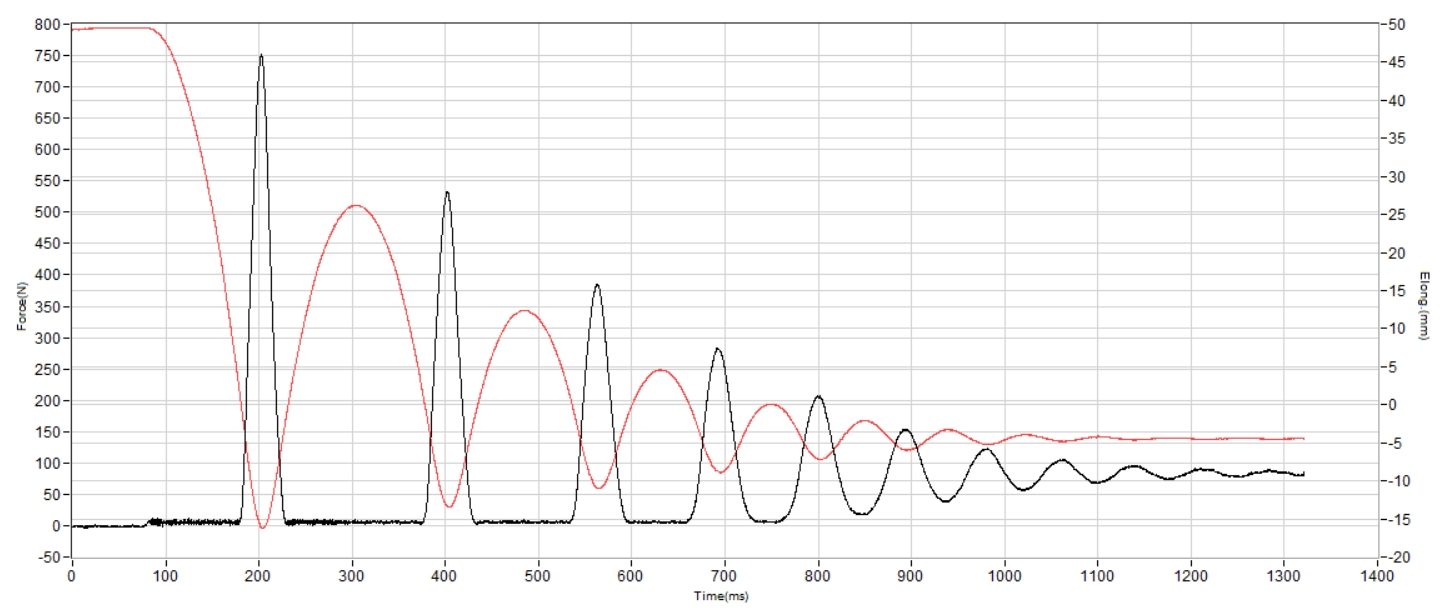
| Hoka Bondi 9 | 146 SA |
| Average | 129 SA |
Energy return
What we love about doing lab-based shoe reviews is that we don’t have to guess or rely on vague impressions—we speak with real data.
That’s why we’re not just saying this shoe feels bouncier than the Bondi 8. We can confirm it with numbers: energy return jumped from 51.0% to 60.2% in our test. So, it’s clear that switching from CMEVA to supercritical EVA paid off.
| Hoka Bondi 9 | 60.2% |
| Average | 58.6% |
Heel stack
Hoka has always positioned the Bondi as its max-cushion model, but with other brands pushing the limits, the Bondi 8’s 36.2 mm stack started feeling like just another daily trainer—no longer standing out in the maximalist category.
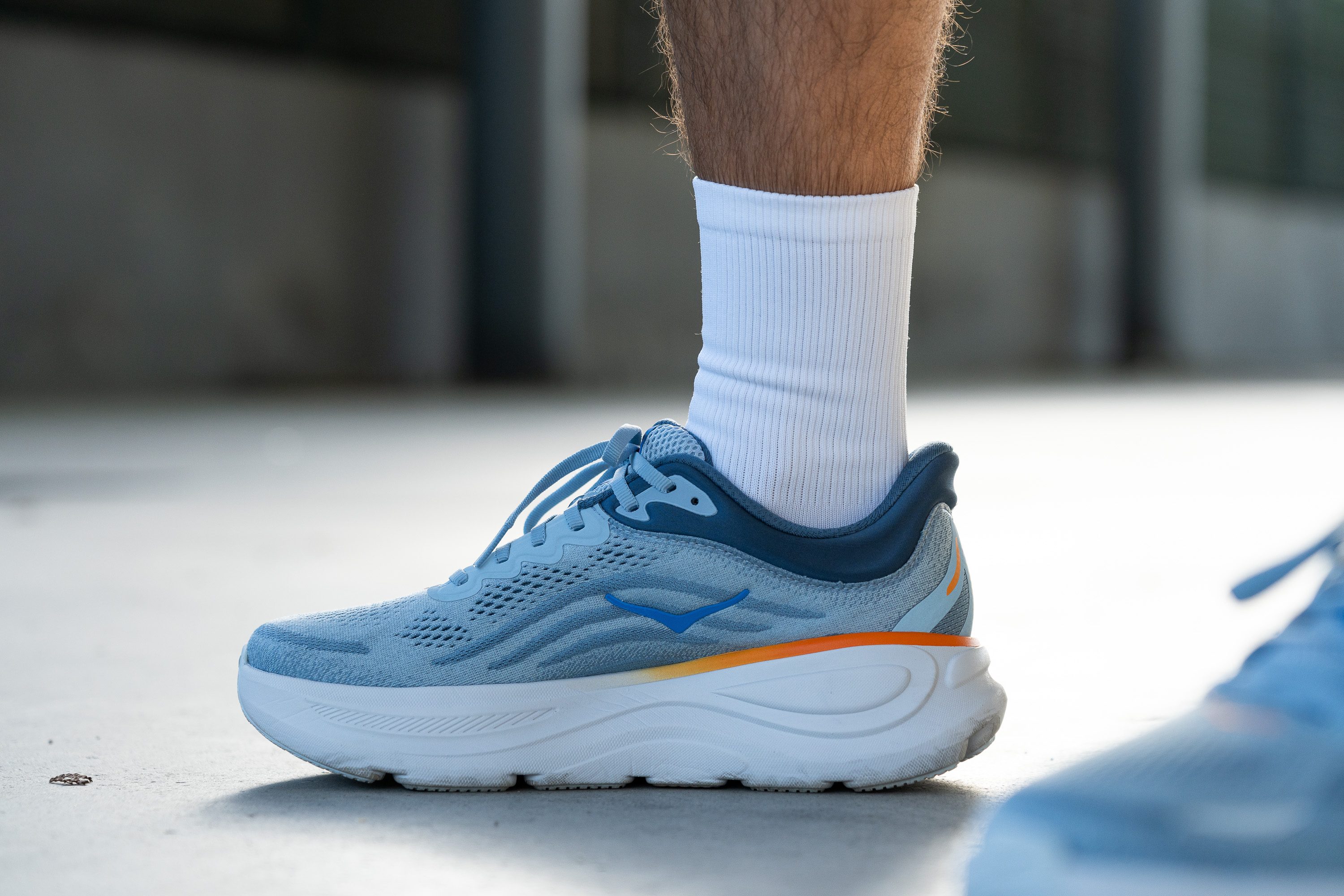
Here comes the Bondi 9 with a towering 41.3 mm in the heel. That's a real upgrade designed to reclaim its spot at the top. After testing, we discovered that this high-stack revamp truly delivers, and our callipers confirmed every millimetre of that extra-deep cushioning.
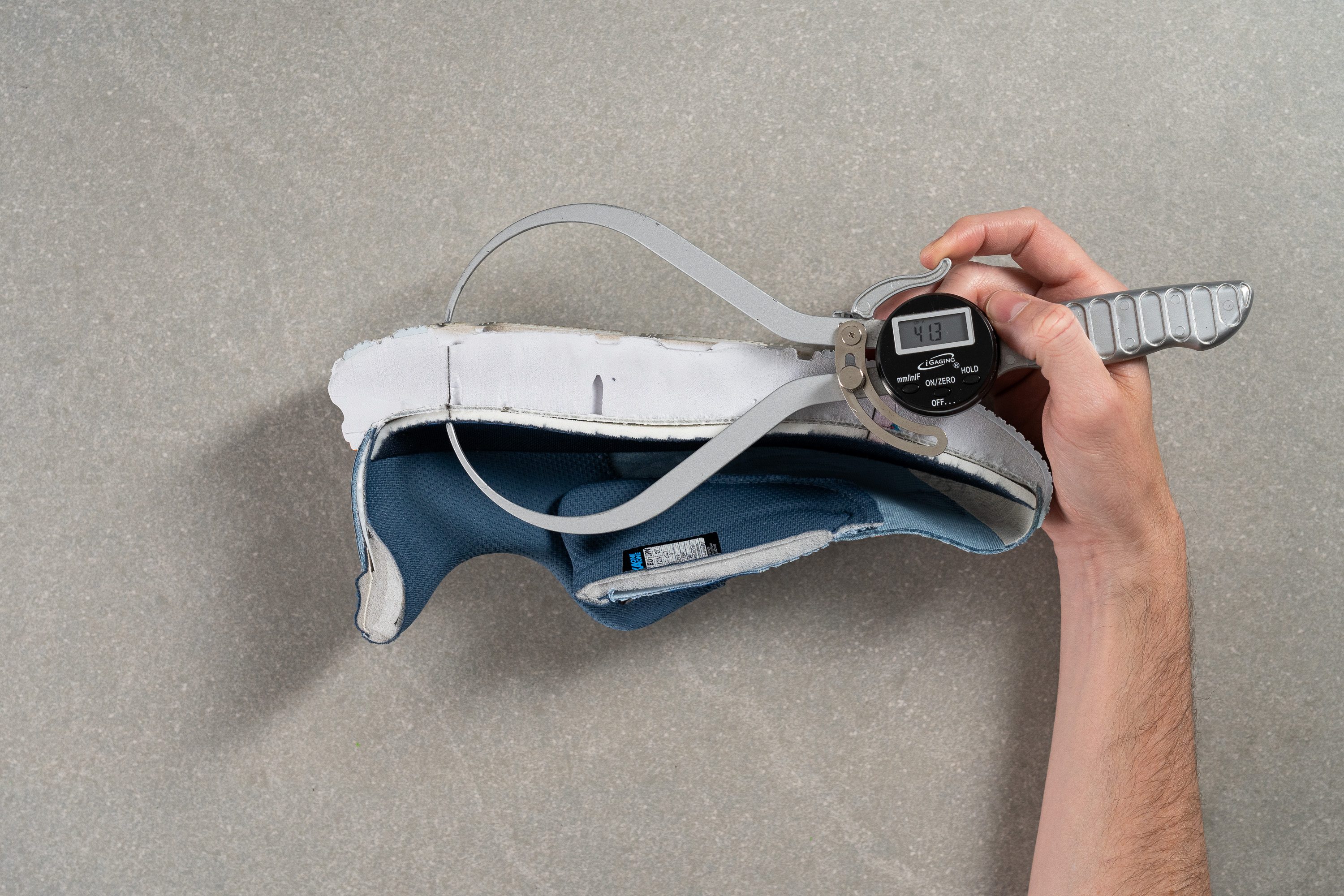
| Hoka Bondi 9 | 41.3 mm |
| Average | 34.8 mm |
Forefoot stack
In the forefoot, we measured 32.2 mm—easily surpassing the 30 mm threshold to (again) qualify as maximalist. Therefore, forefoot and midfoot strikers will find no shortage of cushioning, ensuring a plush and protective ride.
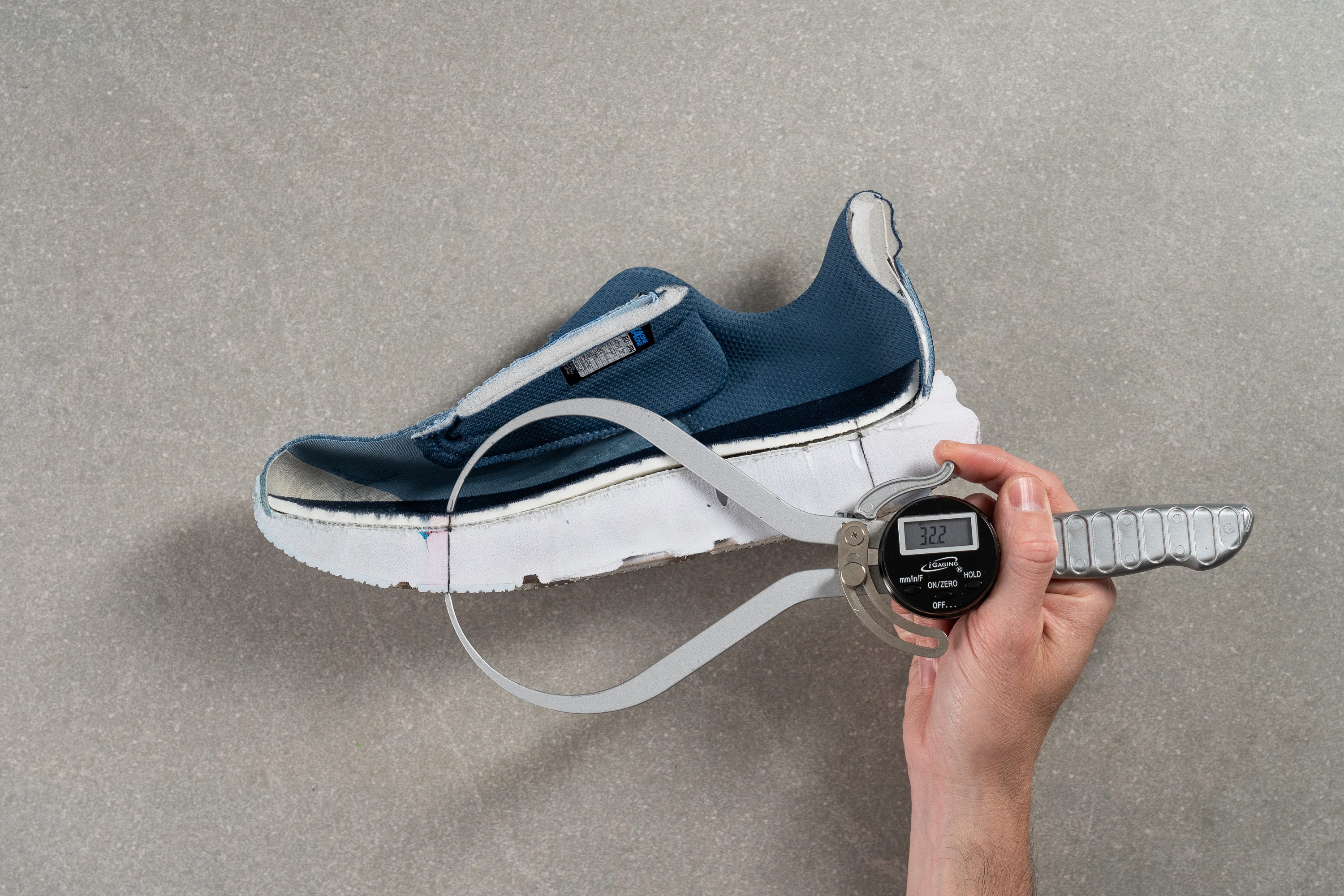
| Hoka Bondi 9 | 32.2 mm |
| Average | 26.2 mm |
Drop
In our lab, we always measure at the same World Athletics-designated points, ensuring consistency across all shoes. However, Hoka seems to measure the drop further back from the forefoot, closer to the midfoot, which likely explains the discrepancy we found in the drop.
That’s why, instead of Hoka’s claimed 5 mm, we recorded 9.1 mm. And honestly, just looking at the sliced shoe, it’s crystal clear that this shoe can't feature a 5 mm drop.
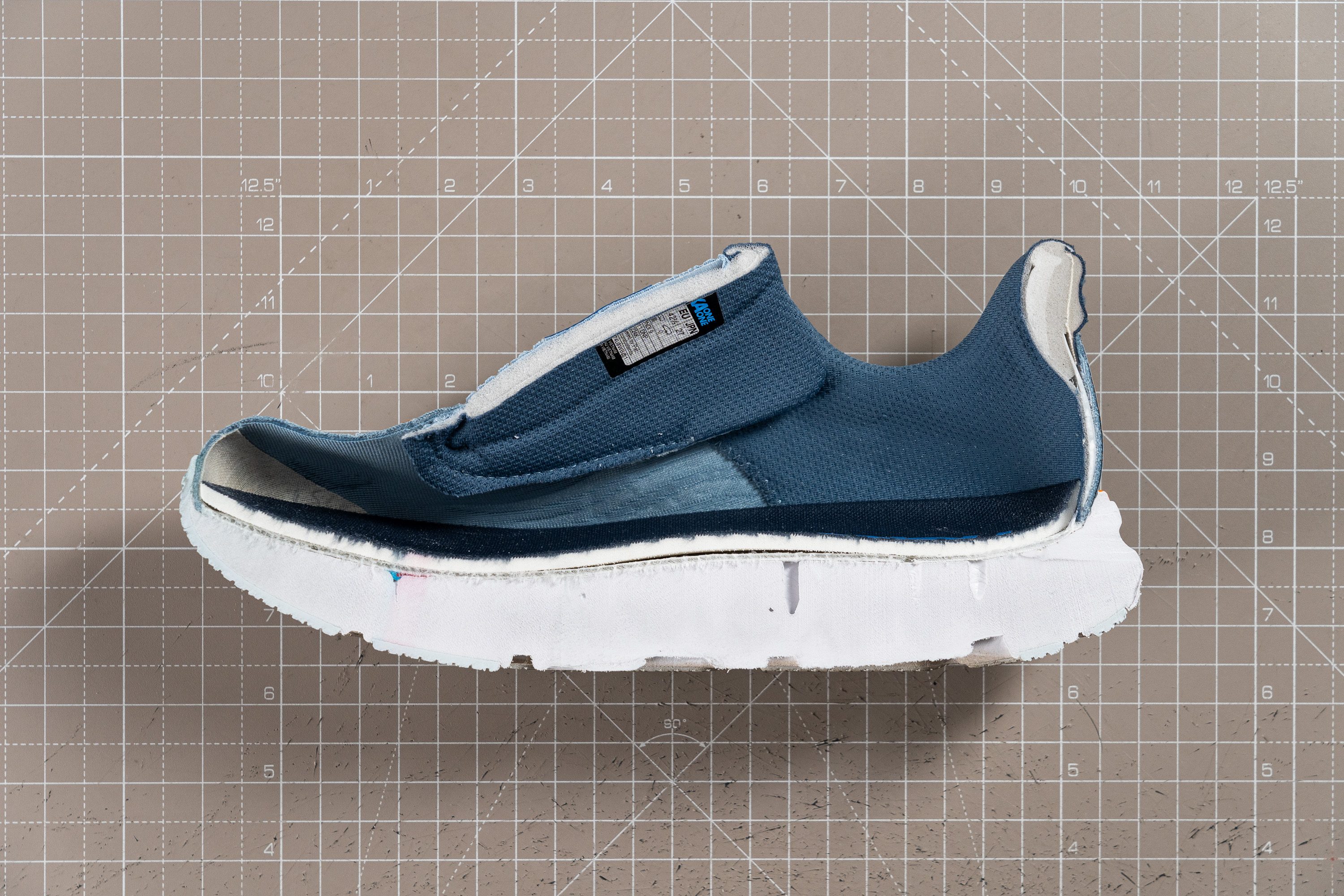
| Hoka Bondi 9 | 9.1 mm |
| Average | 8.6 mm |
Midsole softness
For some reason, there’s a widespread belief that the Bondi is a plush shoe, but it never has been, and the Bondi 9 stays true to that. In our experience, after testing it and confirming with our durometer (25.1 HA), this is one of those ultra-cushioned models that leans toward a firmer feel—similar to the ASICS Superblast 2.
And that’s perfectly fine. With over 40 mm of stack height, using a cloud-soft compound could easily turn into a stability nightmare, creating a mushy ride that sinks too much underfoot instead of providing a balanced, smooth transition.
By the way, while we know this shoe has a massive following beyond running—especially among healthcare workers—it’s time to highlight another major upgrade: performance. Hoka finally ditched the outdated EVA and switched to their supercritical EVA midsole, making the Bondi 9 both lighter and significantly more responsive.
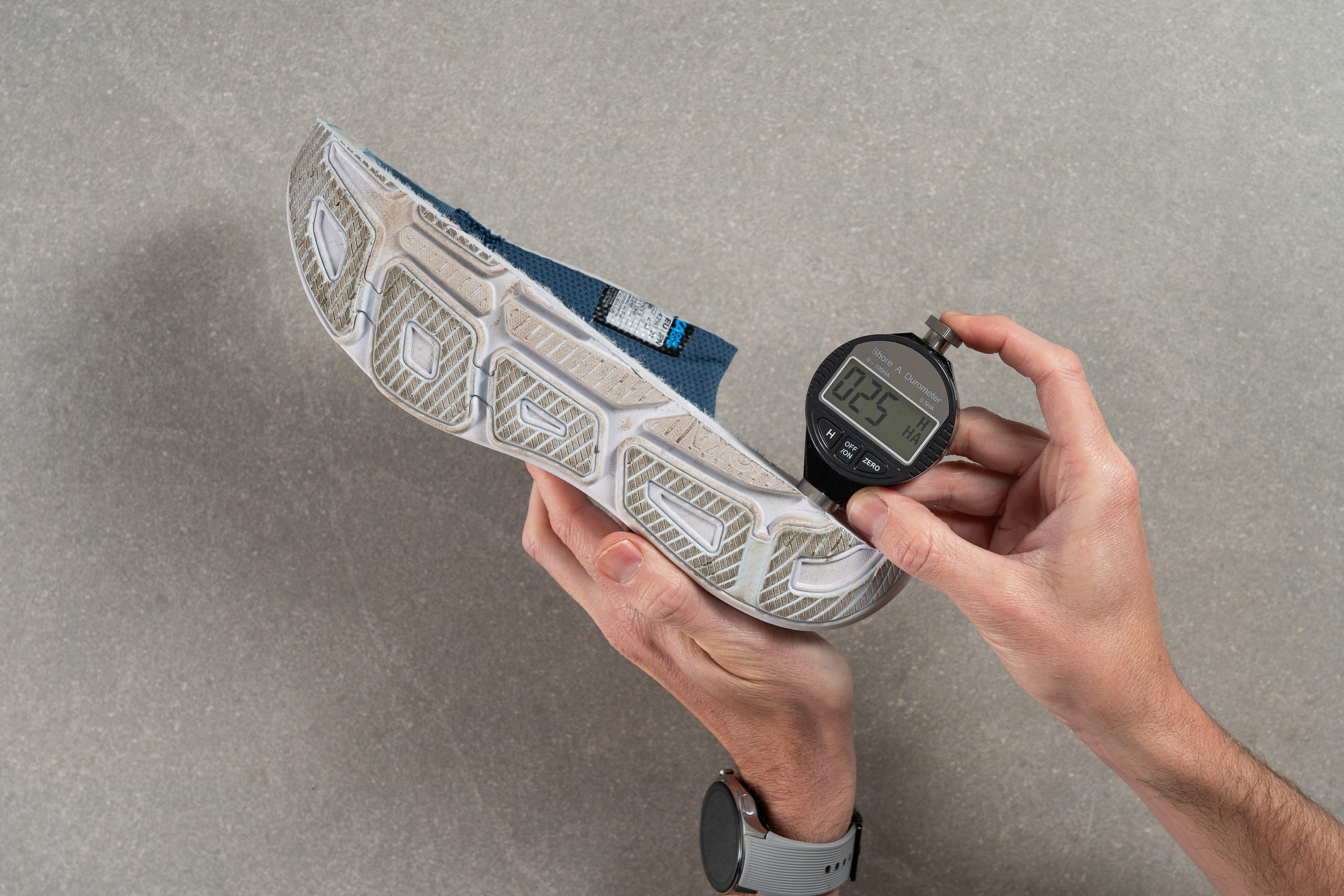
| Hoka Bondi 9 | 25.1 HA |
| Average | 20.4 HA |
Rocker
Like its predecessor, the Bondi 9 features a moderate rocker—far from the aggressive, forward-pushing design seen in models like the Cielo X1.
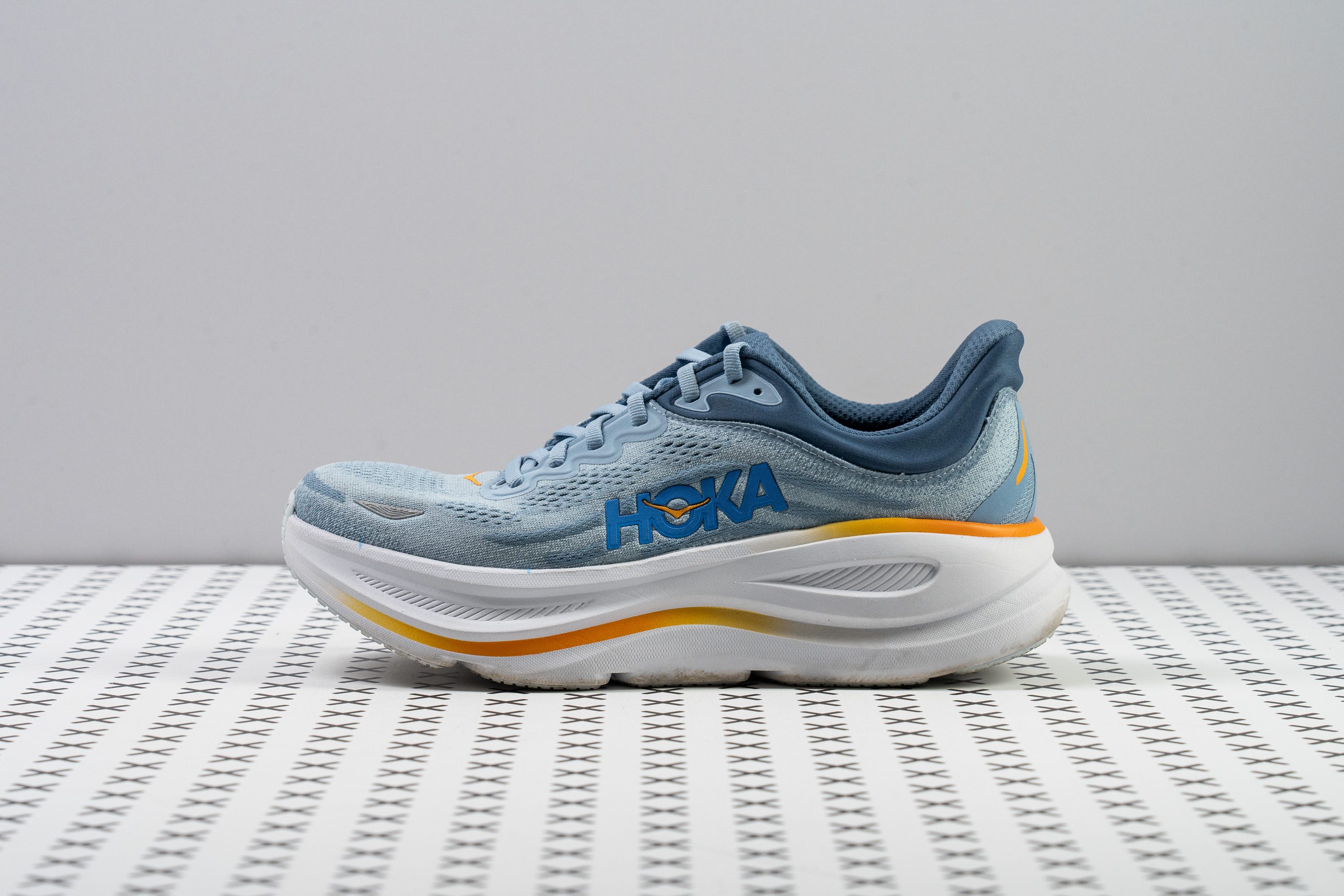
In our experience, this is the right approach, as the shoe is built for slower paces and recovery runs. For that purpose, an overly pronounced rocker would be unnecessary—potentially even disruptive to the smooth, controlled ride this shoe aims to deliver. And it would make walking feel awkward and unnatural too.
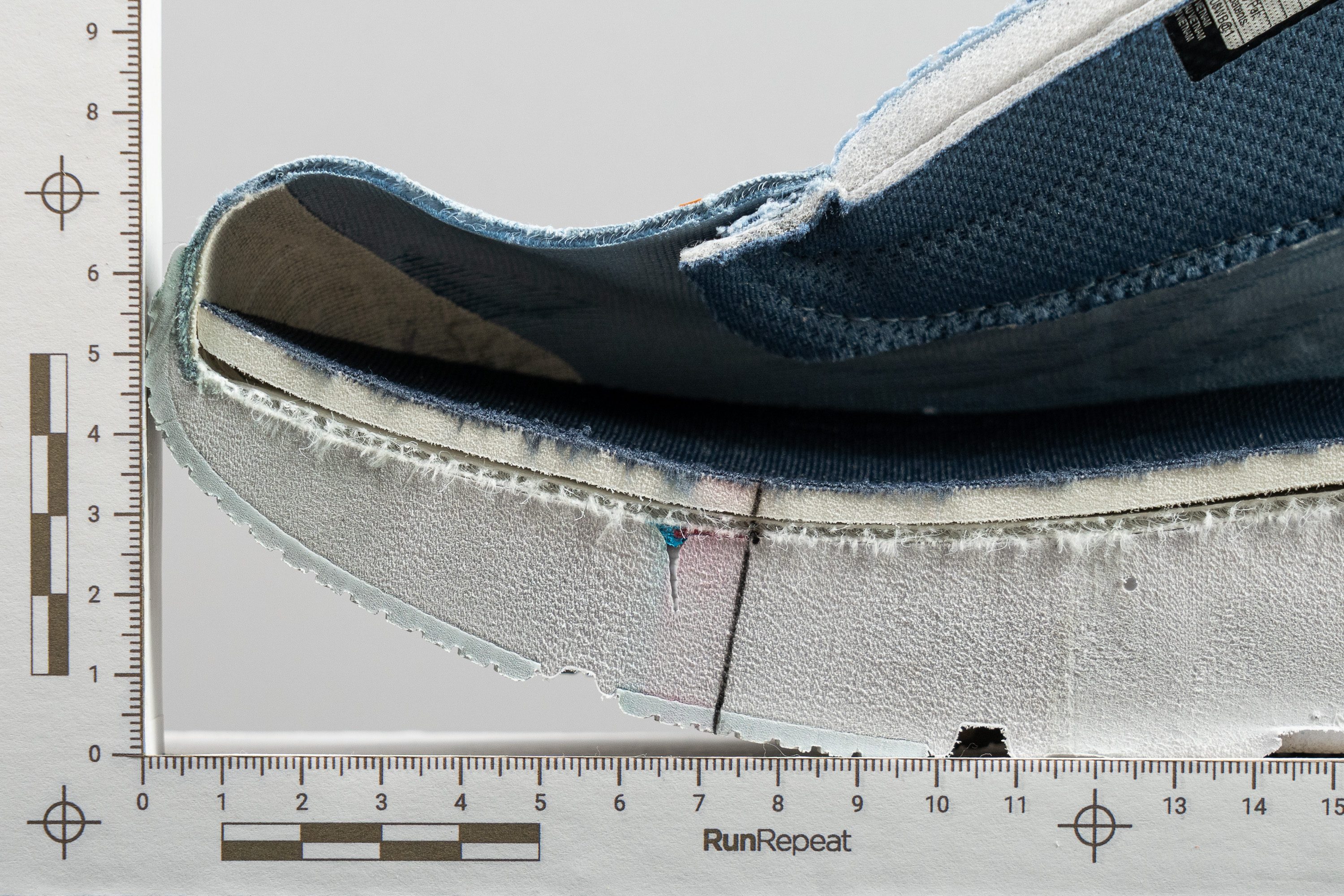
Size and fit
Size
Hoka Bondi 9 fits true to size (295 votes).
Width / Fit
One of the most frequent concerns from some runners about the Bondi series is its snug fit. To determine if this persists in version 9, we created a gel mould of the shoe's interiors and began taking precise measurements.
Our first reading (94.1 mm) already falls below the average, confirming a fit that, in our experience, works well for narrow-footed runners or those with average-width feet who enjoy Hoka’s signature tight fit.
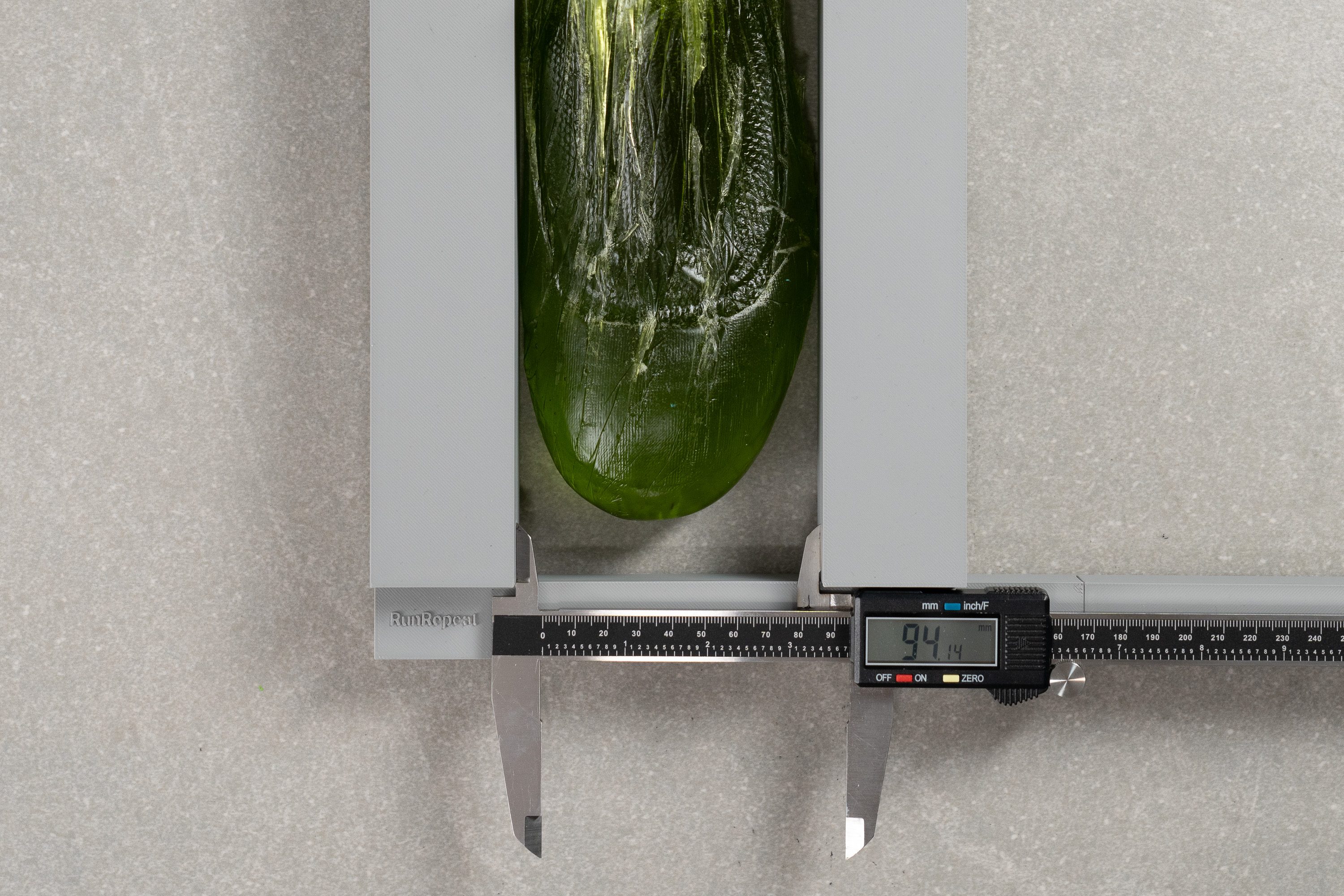
| Hoka Bondi 9 | 94.1 mm |
| Average | 95.1 mm |
Toebox width
After measuring the width of the shoe, we shifted to the toebox to evaluate space for toe splay.
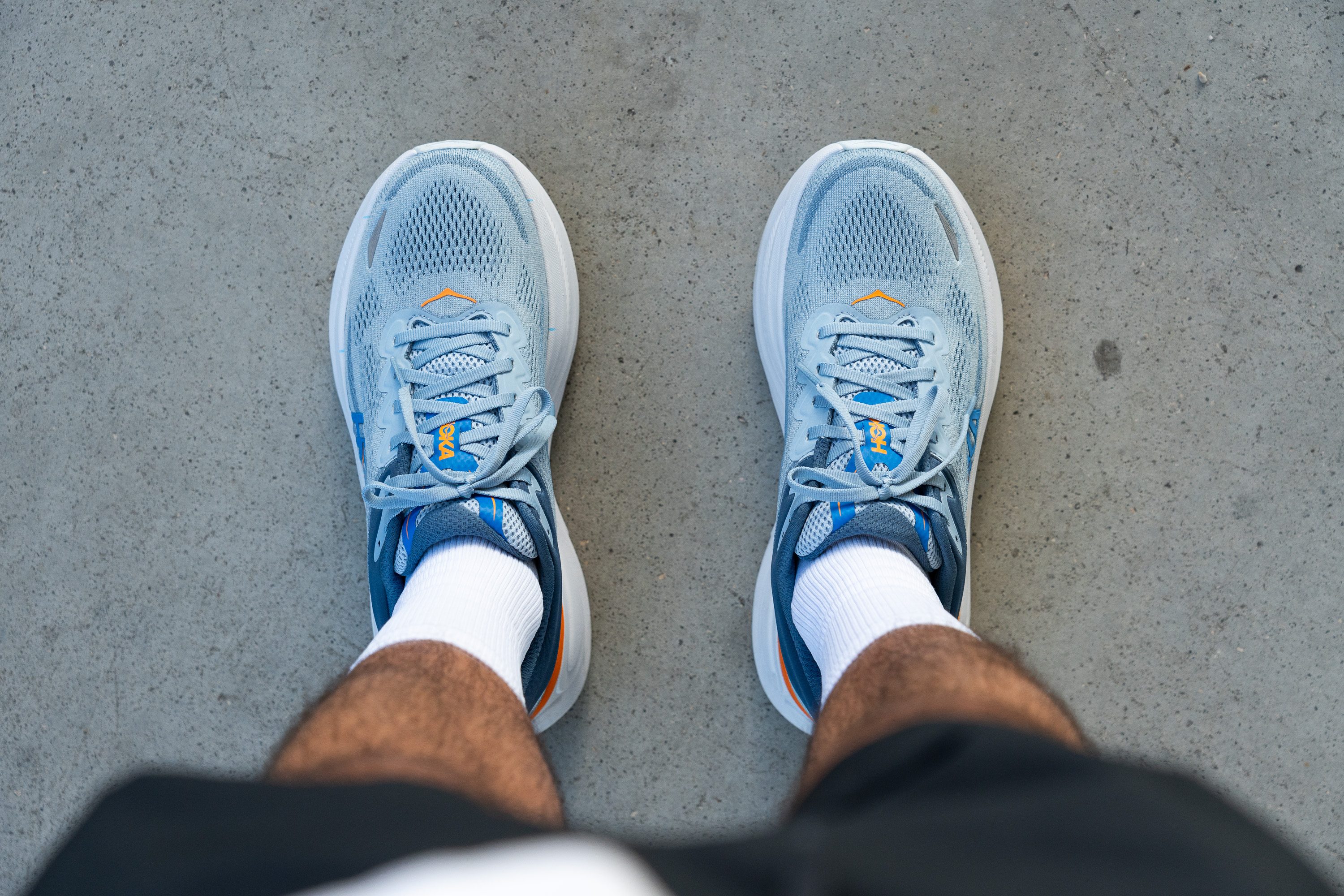
At 72.5 mm, it’s noticeably limited—what we’d call a tight fit. In our experience, this aligns with Hoka’s narrow-foot-friendly design, which remains a divisive feature that runners either embrace or avoid.
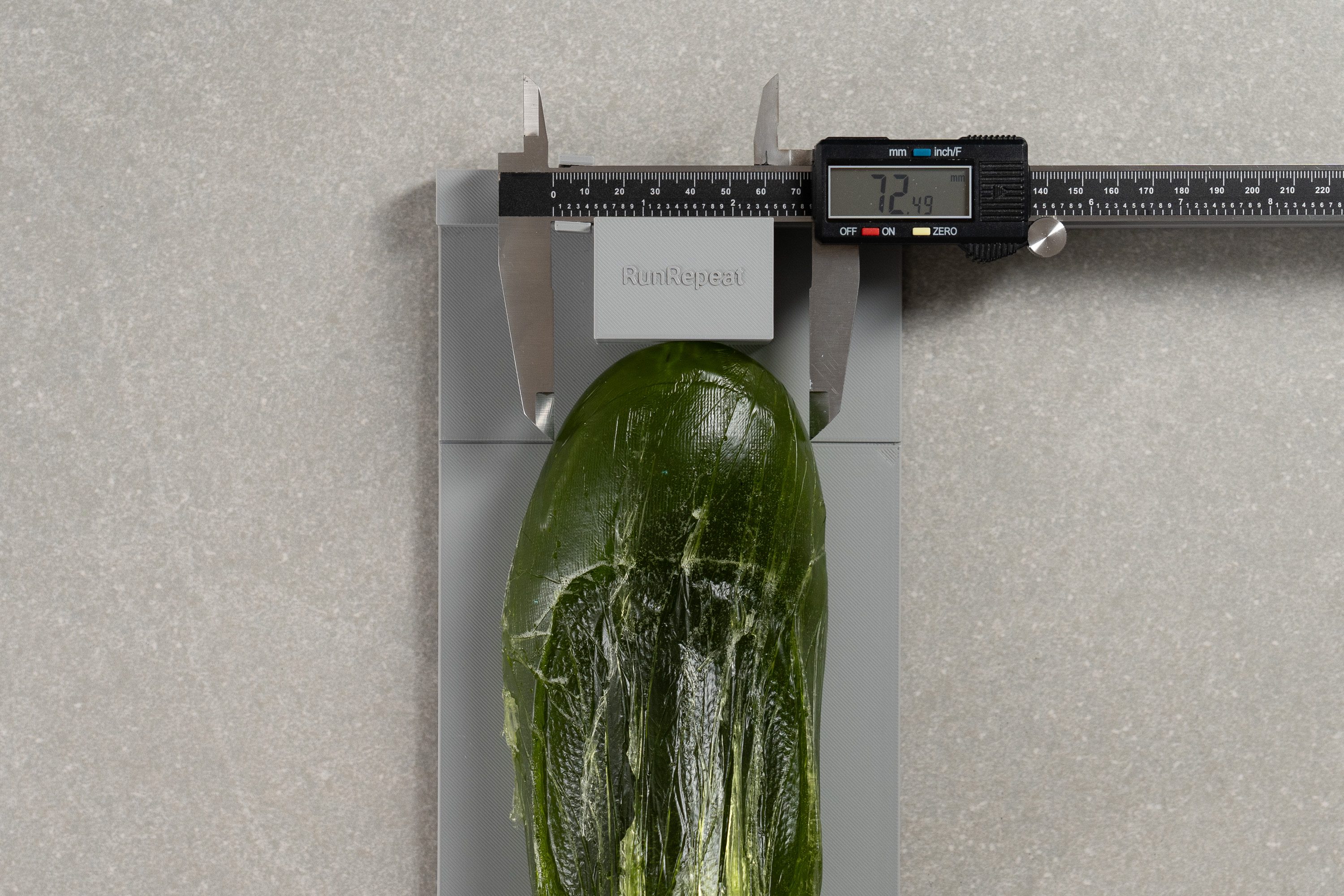
| Hoka Bondi 9 | 72.5 mm |
| Average | 73.3 mm |
Toebox height
On the flip side, we discovered a generously tall toebox with an impressive 29.6 mm of vertical clearance.
While the Bondi doesn’t provide much lateral space, those who prefer unrestricted upward toe movement will find ample room to stretch comfortably.
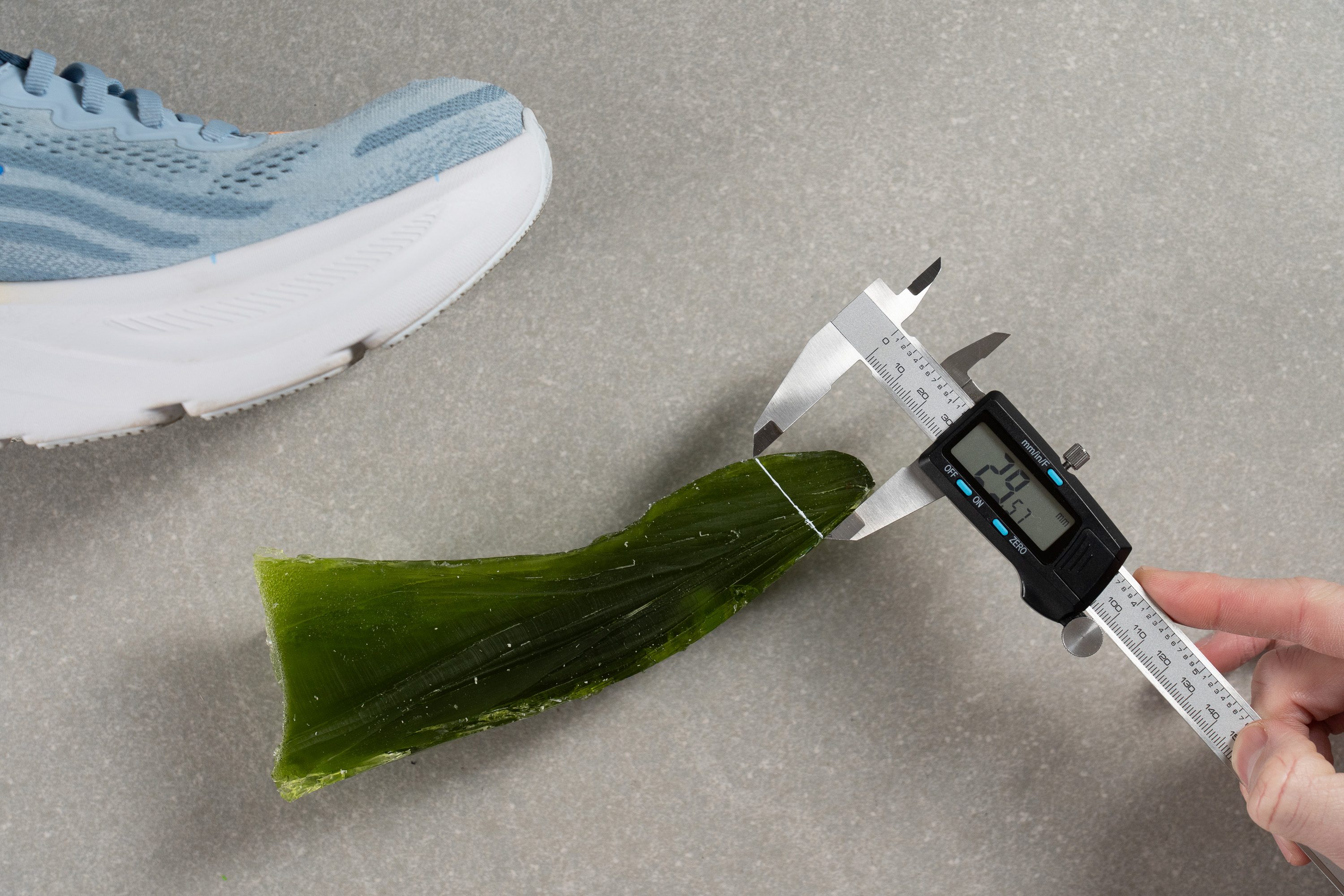
| Hoka Bondi 9 | 29.6 mm |
| Average | 27.1 mm |
Traction / Grip
Traction test
We tested the Bondi 9 in wet conditions using the SATRA TM144 protocol and recorded a score of 0.45. That places it right in the good grip category—enough for everyday runs but not standout on wet concrete.
During our runs, the outsole handled dry roads without issue. But runners in rain-heavy areas may prefer a more grip-focused maximalist shoe like the ASICS Gel Nimbus 27.
| Hoka Bondi 9 | 0.45 |
| Average | 0.48 |
Outsole design
The outsole plays a key role in the Bondi 9’s design. Hoka aimed to cut weight and stiffness with well-placed cutouts while maintaining strong rubber coverage in high-wear areas—a smart balance between durability, efficiency and flexibility.
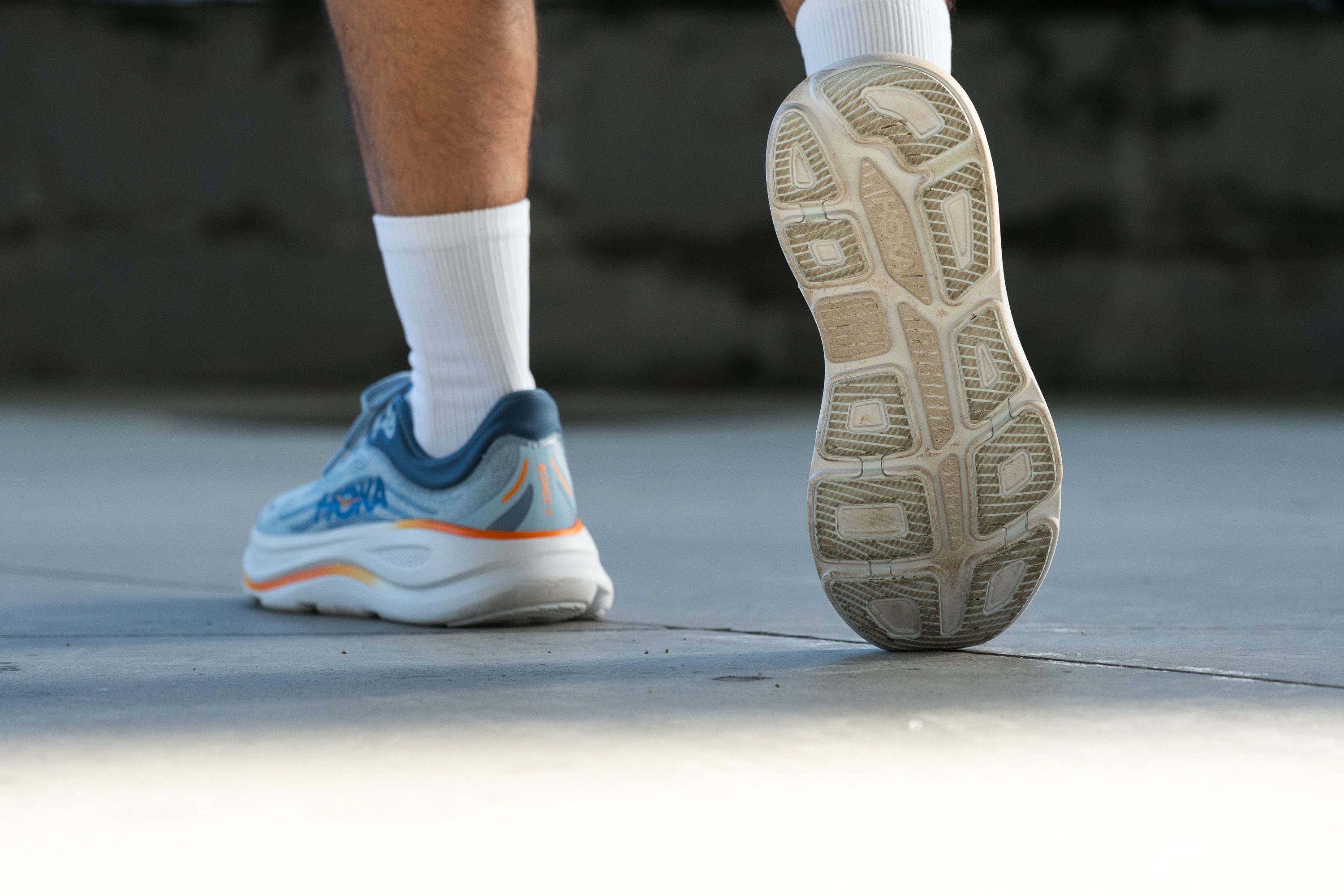
Flexibility / Stiffness
With +40 mm in the heel, creating a super-flexible Bondi is impossible, no matter how many flex grooves Hoka carves into the outsole. However, at 16.5N in our bend test, it’s not too stiff and remains comfortable for walking or jogging.
That said, if you're after a natural running feel or a shoe that doubles as a highly-flexible sneaker, this isn’t the one. Check out the Nike Pegasus 41 or the Adidas Supernova Rise instead.
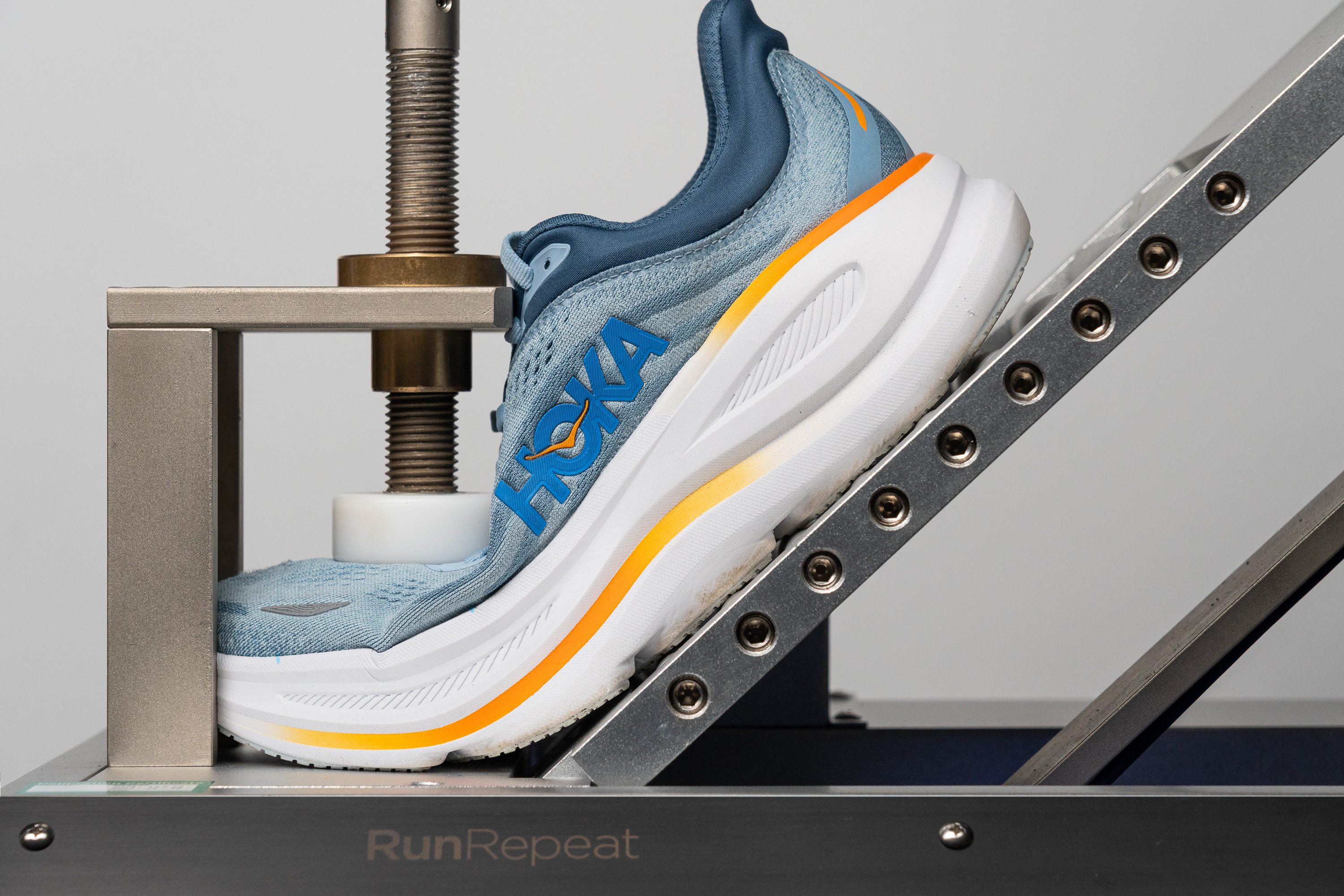
| Hoka Bondi 9 | 16.5N |
| Average | 15.3N |
Weight
The Hoka Bondi 9 tipped our scale at 10.7 oz or 303g, making it an undeniably heavy shoe. But when we factor in its sky-high stack, ultra-wide platform, and plushly-padded upper, we think it’s surprisingly lightweight for its size—kinda weird, right?
To be fair, we never felt it overwhelmingly heavy while running, especially since it’s built for slower paces, where extra weight isn’t a dealbreaker. However, the moment we tried to pick up speed, the bulk became obvious. Therefore, while Hoka did a solid job trimming weight from its predecessor—thanks to the new supercritical EVA midsole—expect some heft underfoot!
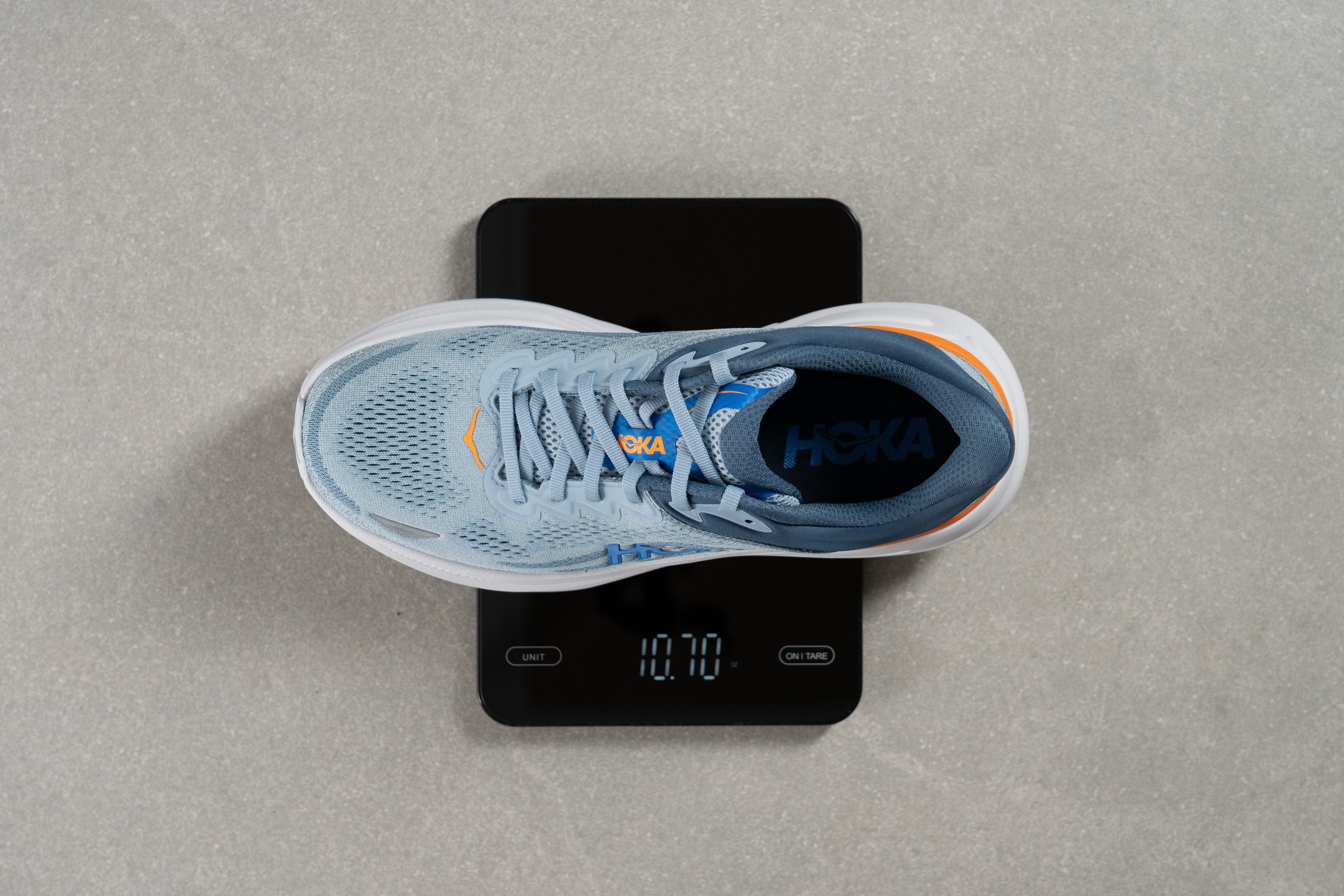
| Hoka Bondi 9 | 10.7 oz (303g) |
| Average | 9.3 oz (264g) |
Breathability
Bondi has long been Hoka’s synonym for comfort, and that often means sacrificing some breathability in favour of an ultra-plush, well-padded upper. So, we were eager to see which direction they took with the Bondi 9.
Hooking up our smoke machine to our custom 3D-printed testing piece, we ran the airflow test in the toebox. The result? Moderate ventilation, earning a 3/5 in our lab. That’s a decent outcome, making it suitable year-round, though picking the right sock becomes crucial.
Next, we used a high-powered LED light to assess transparency. Surprisingly, no light passed through, confirming a thick, densely mesh designed for stability and comfort. With that in mind, the previous airflow score starts to look pretty good.
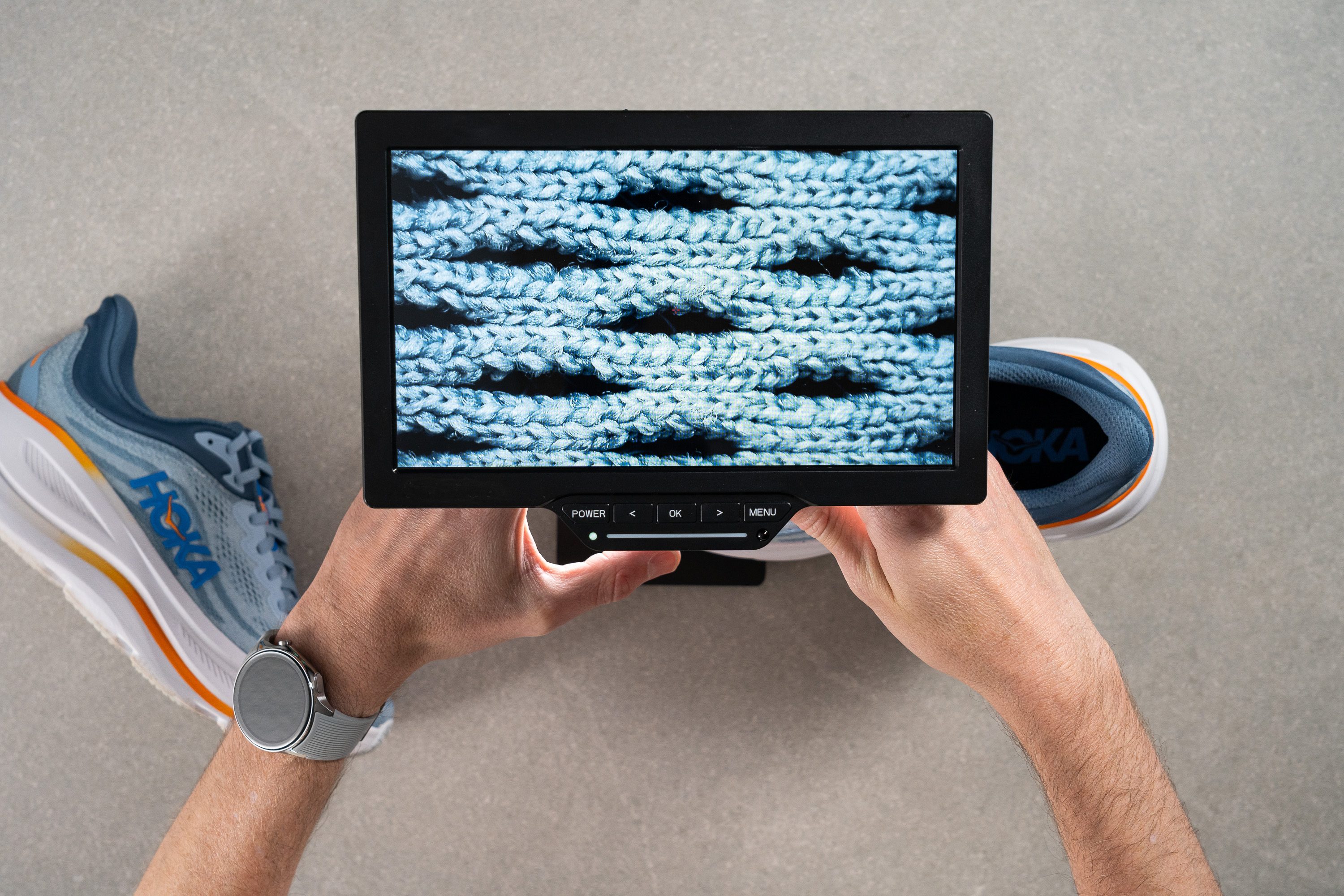
Moving to our microscope station, we uncovered the Bondi’s breathability secret—large, strategically placed ventilation holes.
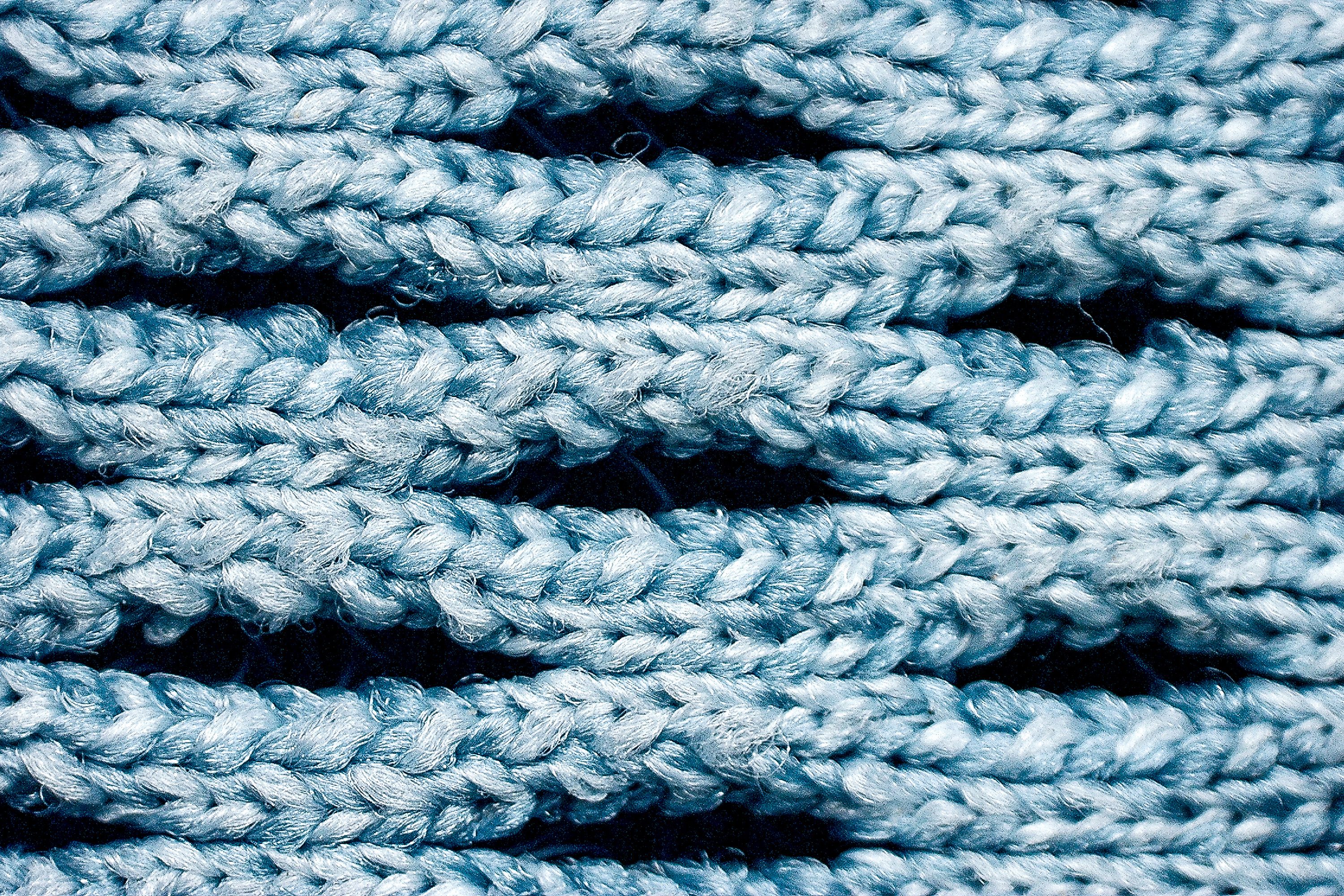
While most of the upper remains highly-structured, these openings allow for decent airflow, preventing it from feeling overly warm.
The upper itself boasts excellent quality, engineered for all-day wear and long runs, as expected in a premium daily trainer though. The heel and tongue feature pillow-soft padding, ensuring zero unwanted pressure on sensitive areas while enhancing step-in comfort.
| Hoka Bondi 9 | 3 |
| Average | 3.7 |
Stability
Lateral stability test
The Bondi 9 remains an oversized powerhouse, featuring an exceptionally wide heel, midfoot, and forefoot.
This alone provides impressive stability for a neutral shoe, but Hoka takes it further with elevated midsole sidewalls, designed to centre the ride as much as possible. In our experience, it certainly achieves that—though, as always, there’s a trade-off. As expected, it's a less natural ride.
Torsional rigidity
We anticipated a max score in this test, so we were slightly surprised to land at 4/5 despite the massive stack height and broad platform. It seems those strategically placed flex grooves on the outsole made a real difference!
| Hoka Bondi 9 | 4 |
| Average | 3.5 |
Heel counter stiffness
Maximalist running shoes often feature rock-stiff heel counters to enhance stability, but not the Bondi—making it a great choice for those who plan to wear it casually, whether for work or everyday errands.
We rated the Bondi’s 3D-moulded heel a 3/5, and we fully support this design. With its extra-wide base already providing plenty of stability, prioritising comfort here was a smart move.
| Hoka Bondi 9 | 3 |
| Average | 2.9 |
Midsole width - forefoot
Speaking of the devil—the Bondi 9 is downright gigantic, measuring a staggering 123.2 mm in our first test. If you're looking for an agile, nimble ride, this feels like expecting Stephen Curry and getting Shaquille O'Neal instead. It’s seriously massive.
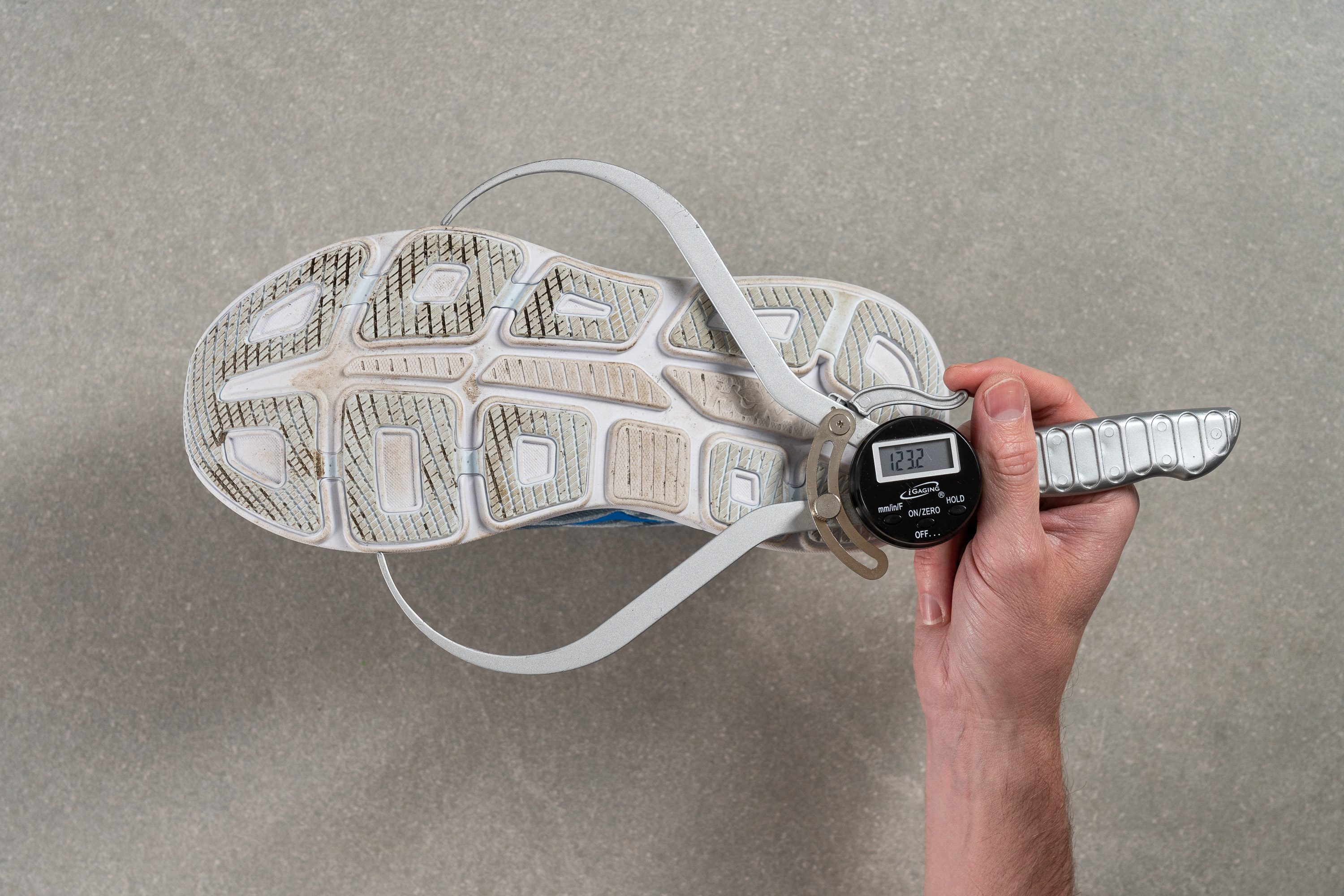
| Hoka Bondi 9 | 123.2 mm |
| Average | 114.4 mm |
Midsole width - heel
And the heel is even broader than average, stretching to a bold 104.2 mm and eclipsing the Bondi 8’s 100.9 mm with ease.
This ultra-wide platform plays a major role in stability, but only if you're comfortable with (or looking for) a super-sized running shoe.
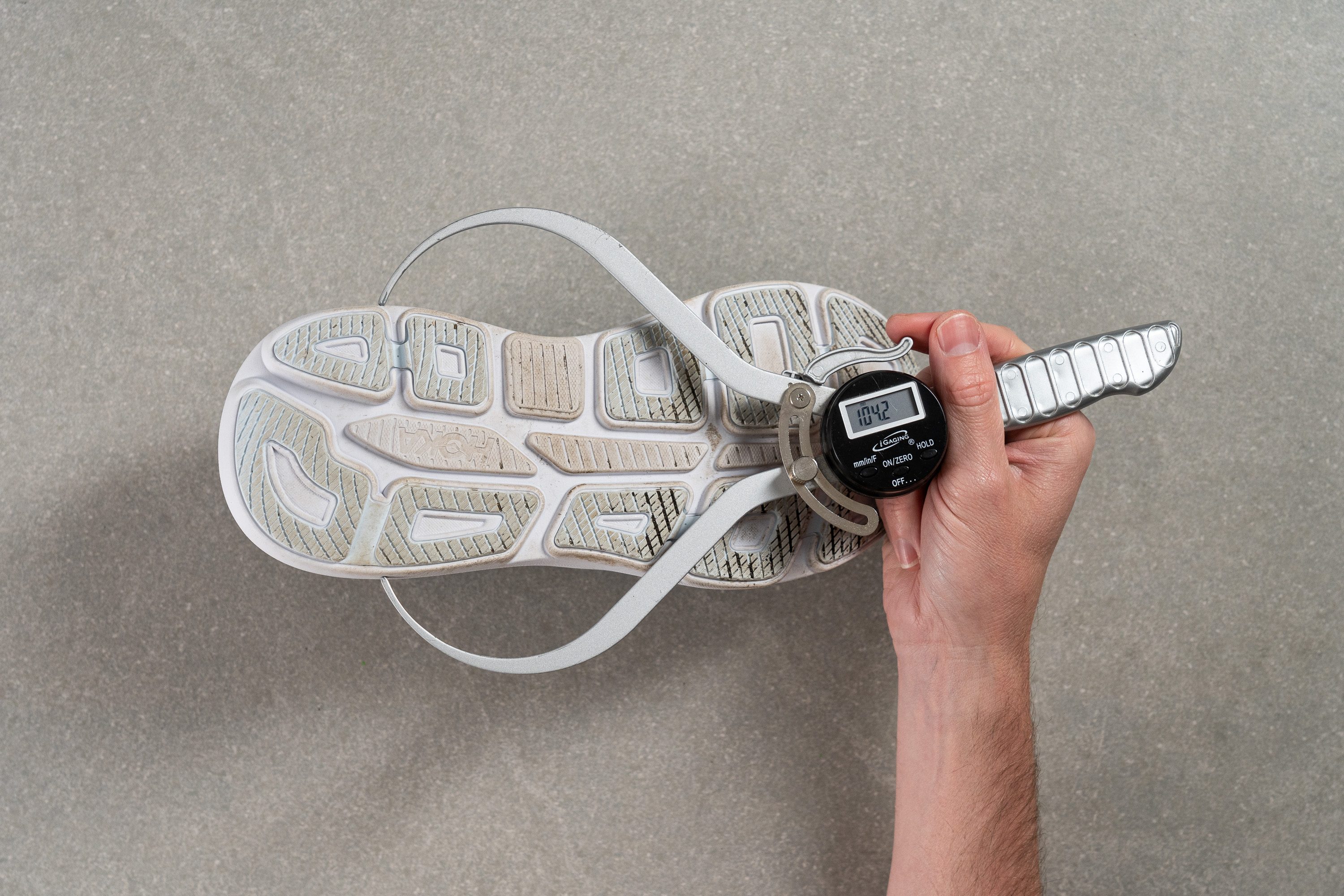
| Hoka Bondi 9 | 104.2 mm |
| Average | 90.7 mm |
Durability
Toebox durability
The Bondi 9’s upper delivers a premium blend of comfort and quality, checking all the right boxes. However, we were concerned about durability due to the ultra-plush feel we experienced during our runs.
After putting it through our Dremel test, we discovered that it held up impressively well, earning a solid 4/5 score.
| Hoka Bondi 9 | 4 |
| Average | 2.6 |
Heel padding durability
The heel area performed even better, addressing a key concern for many users. This time, the Bondi 9 excelled with a flawless 5/5—the highest score we award in the lab and a distinction that only a select few shoes achieve.
| Hoka Bondi 9 | 5 |
| Average | 3.4 |
Outsole hardness
The outsole plays a key role in the Bondi 9’s design. Hoka aimed to cut weight and stiffness with well-placed cutouts while maintaining strong rubber coverage in high-wear areas—a smart balance between durability, efficiency and flexibility.

When we pressed our durometer against the rubber, we discovered a 76.5 HC reading—an average score that suggests solid durability. In terms of grip, it performs well, and the shoe’s substantial weight contributes to a planted, stable feel underfoot.
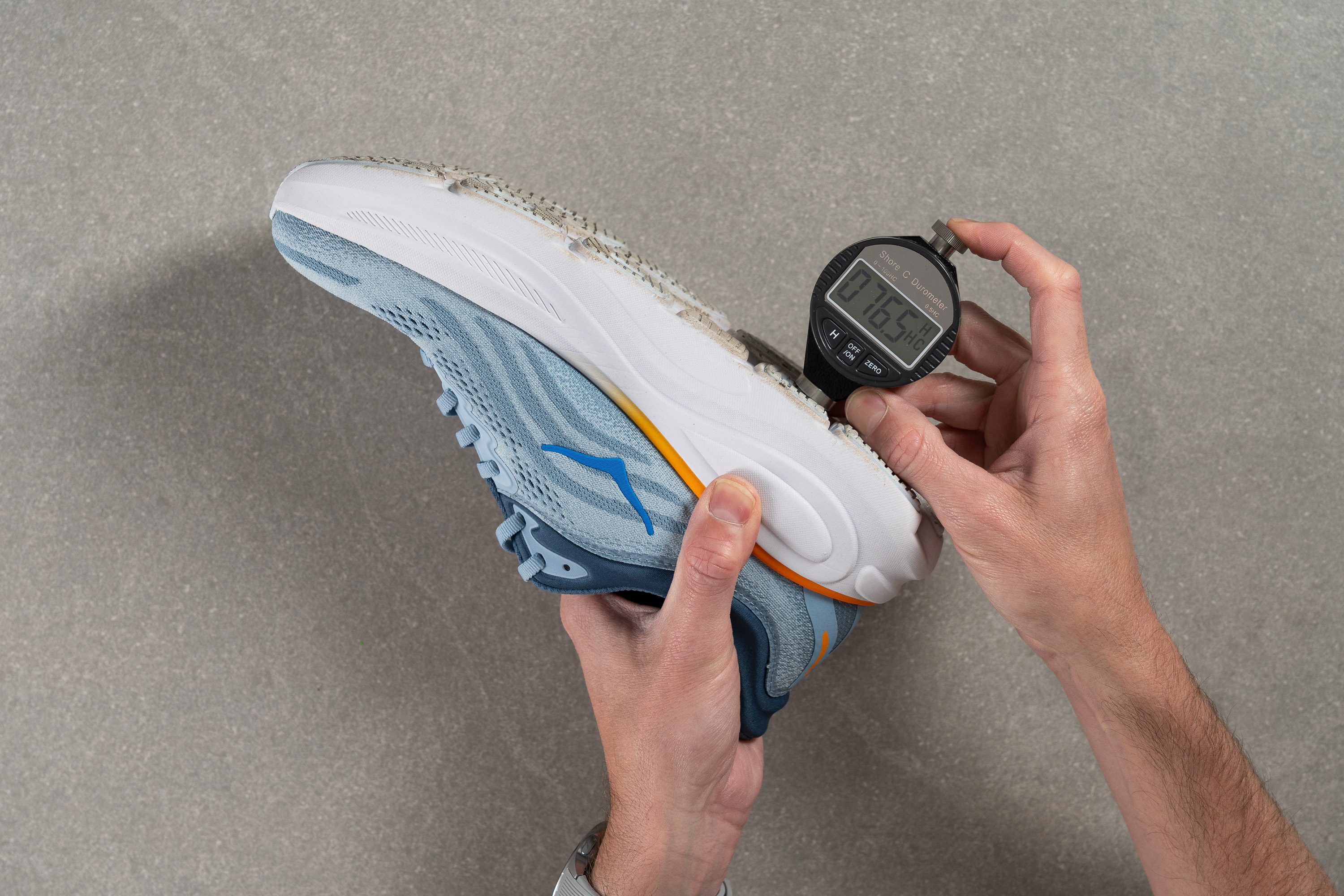
| Hoka Bondi 9 | 76.5 HC |
| Average | 79.2 HC |
Outsole durability
We said that it suggested solid durability, but of course, we test everything here in the lab, and the rubber is no exception. We fired up the Dremel for the last time today and found another good score with only 0.9 mm of wear. That's not bad at all!
| Hoka Bondi 9 | 0.9 mm |
| Average | 1.1 mm |
Outsole thickness
With a thickness of 3.4 mm, this outsole can withstand wear and tear effectively. Hoka knows the Bondi is a favourite among heavier runners and once again took a cautious approach.
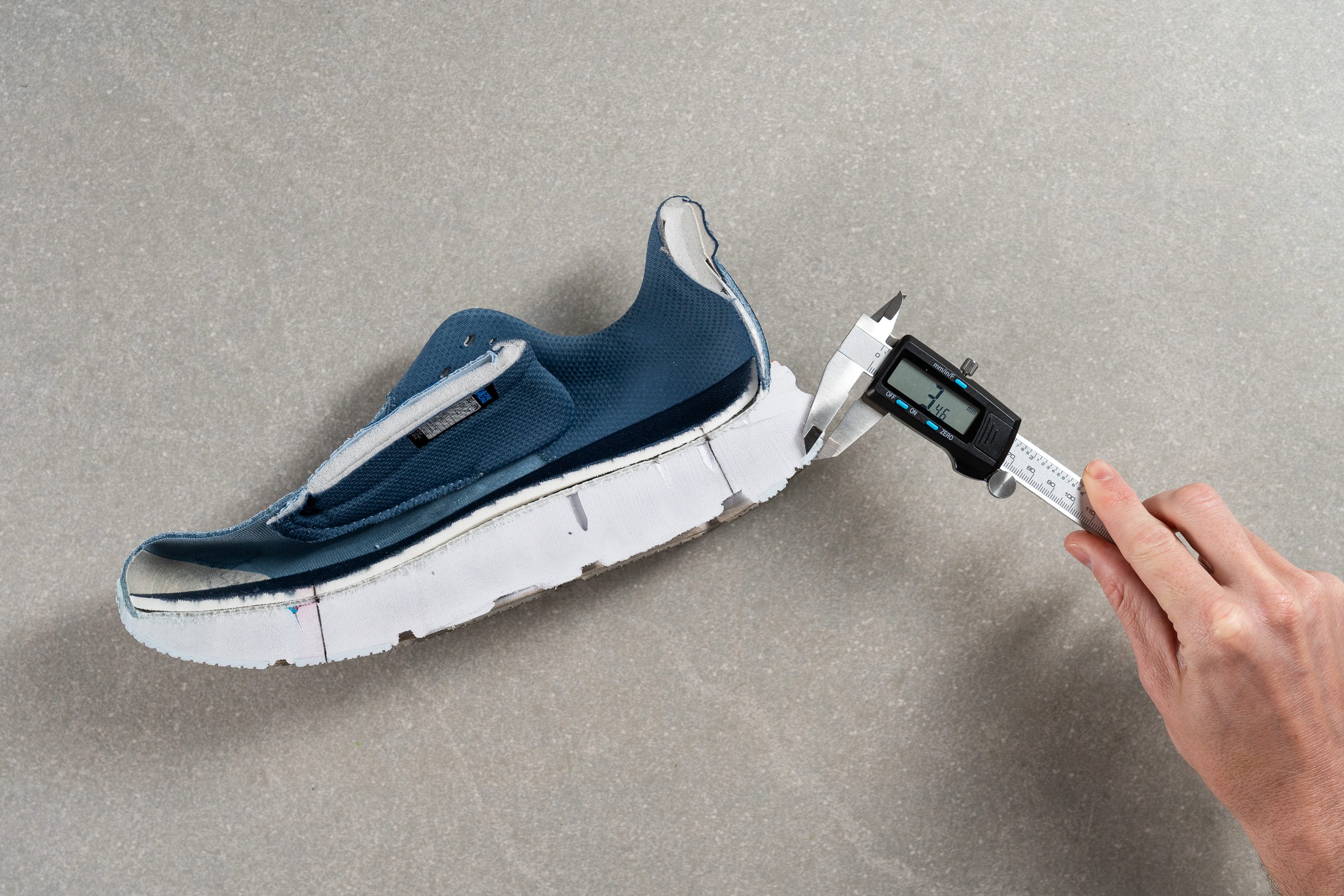
| Hoka Bondi 9 | 3.4 mm |
| Average | 3.2 mm |
Misc
Insole thickness
The insole sits at an average 4.4 mm thickness—nothing standout or particularly noteworthy here.
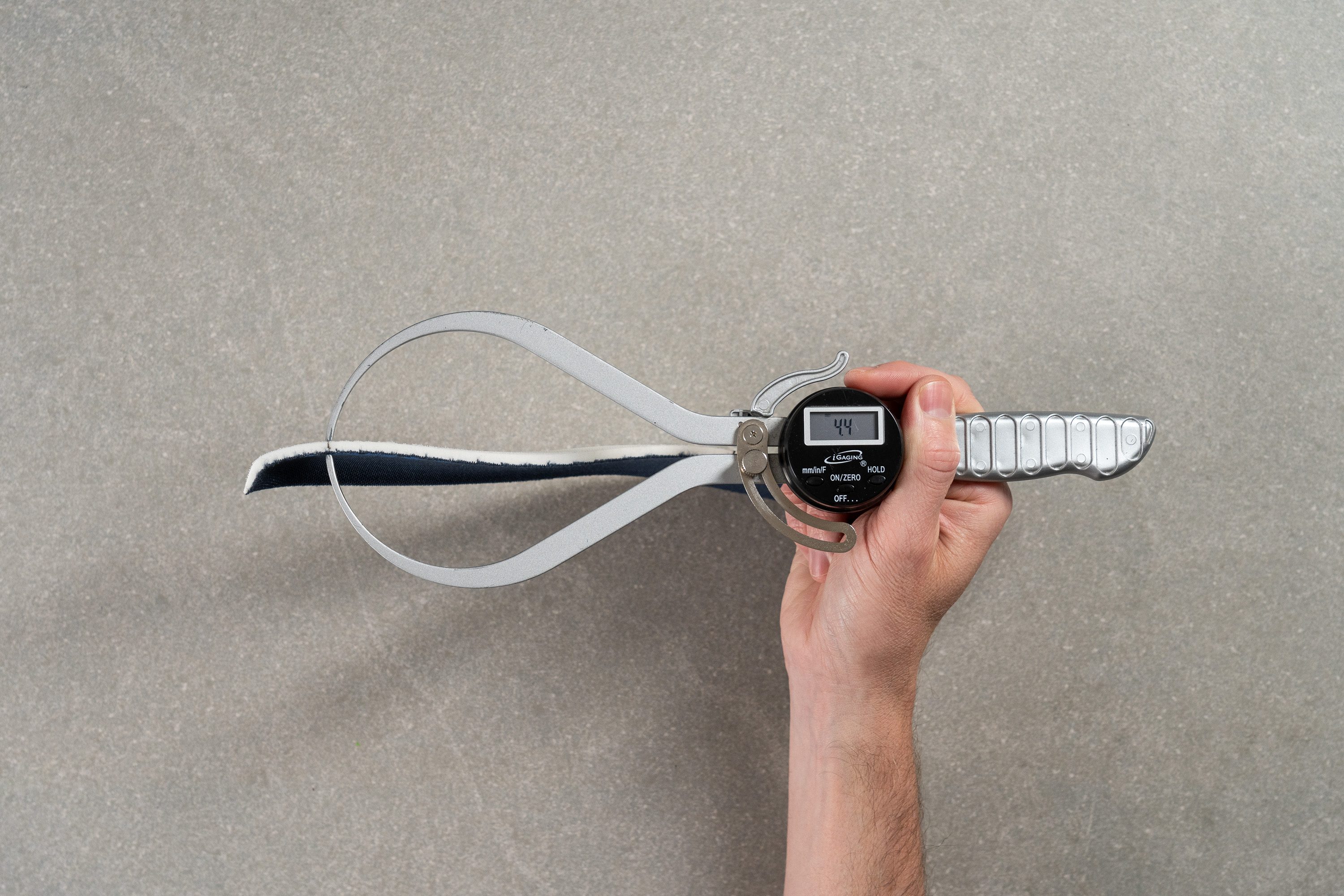
| Hoka Bondi 9 | 4.4 mm |
| Average | 4.5 mm |
Removable insole
Hoka designed the insole to be removable, making replacements effortless. That’s a plus for those who rely on custom orthotics or simply prefer swapping it out for a more cushioned option. And since our tests confirmed ample vertical space in the toebox, using a thicker insole shouldn’t be an issue.
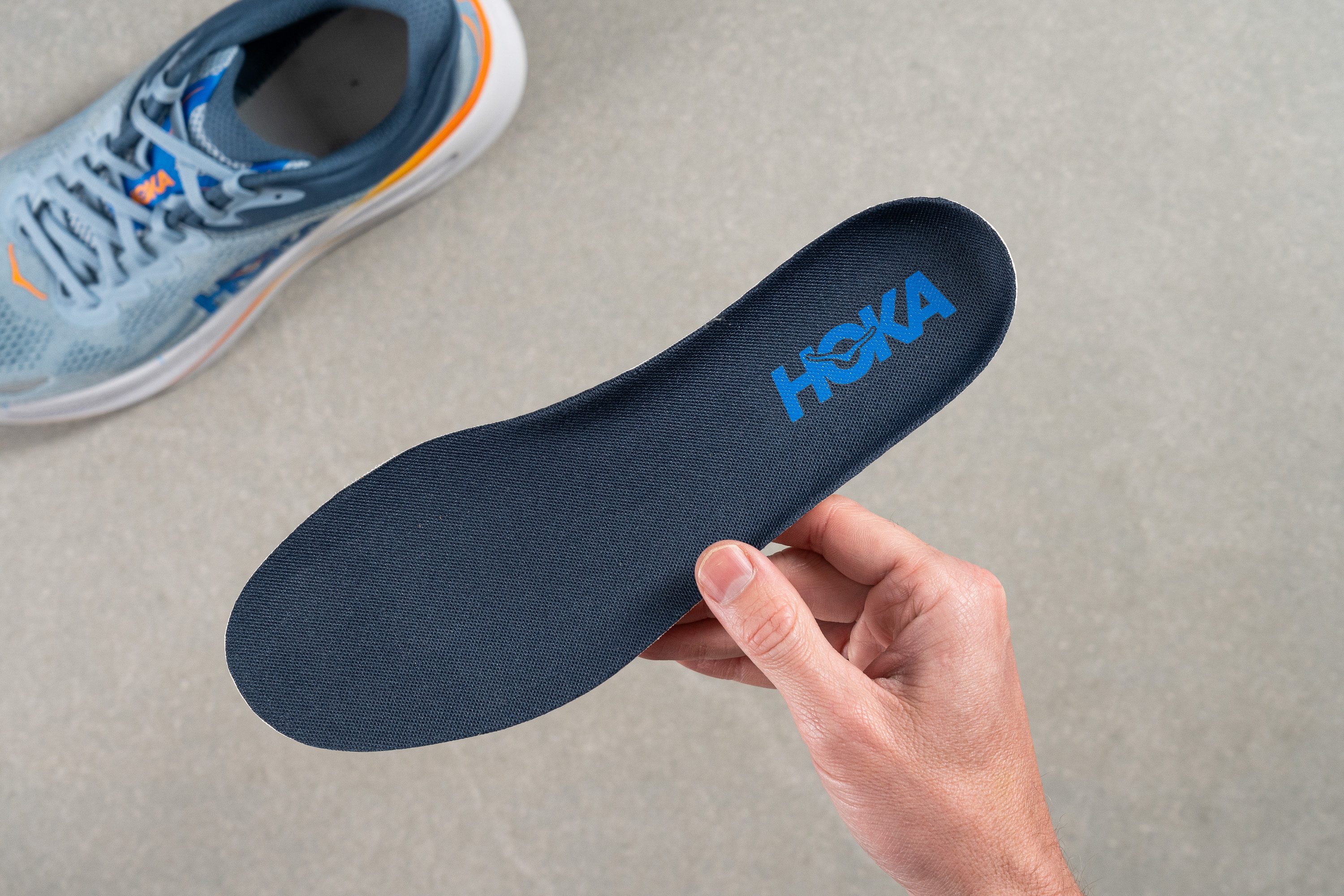
| Hoka Bondi 9 | Yes |
Midsole softness in cold (%)
After testing the foam’s resilience, we found that spending 20 minutes in the freezer led to just a 20% change in softness—a surprisingly stable result for an EVA-based compound. In our view, this level of cold resistance is quite impressive for a non-PEBA midsole!
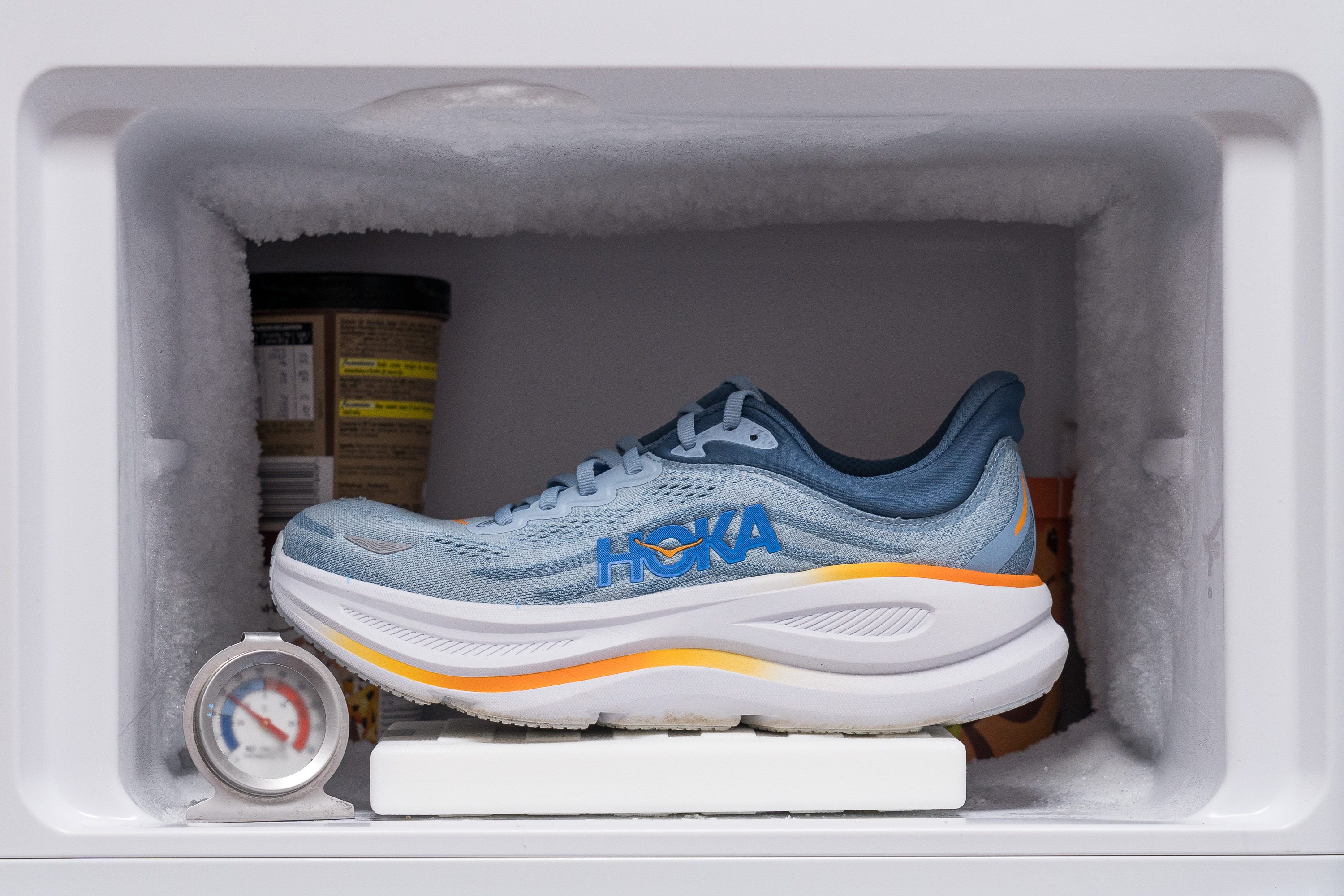
| Hoka Bondi 9 | 20% |
| Average | 24% |
Reflective elements
As a daily trainer positioned in the higher-end range, we expected standout features not commonly found in other shoes—reflectivity being one of them.
Fortunately, Hoka integrated all-around reflectivity into the Bondi 9, making it a smart choice for runners limited to low-light conditions, especially during winter.
| Hoka Bondi 9 | Yes |
Tongue padding
Another defining feature of the Bondi series is its ultra-plush step-in comfort, allowing the shoe to feel soft-and-cushioned from the very first second until you take it off. A key factor behind this is the thick, well-padded tongue.
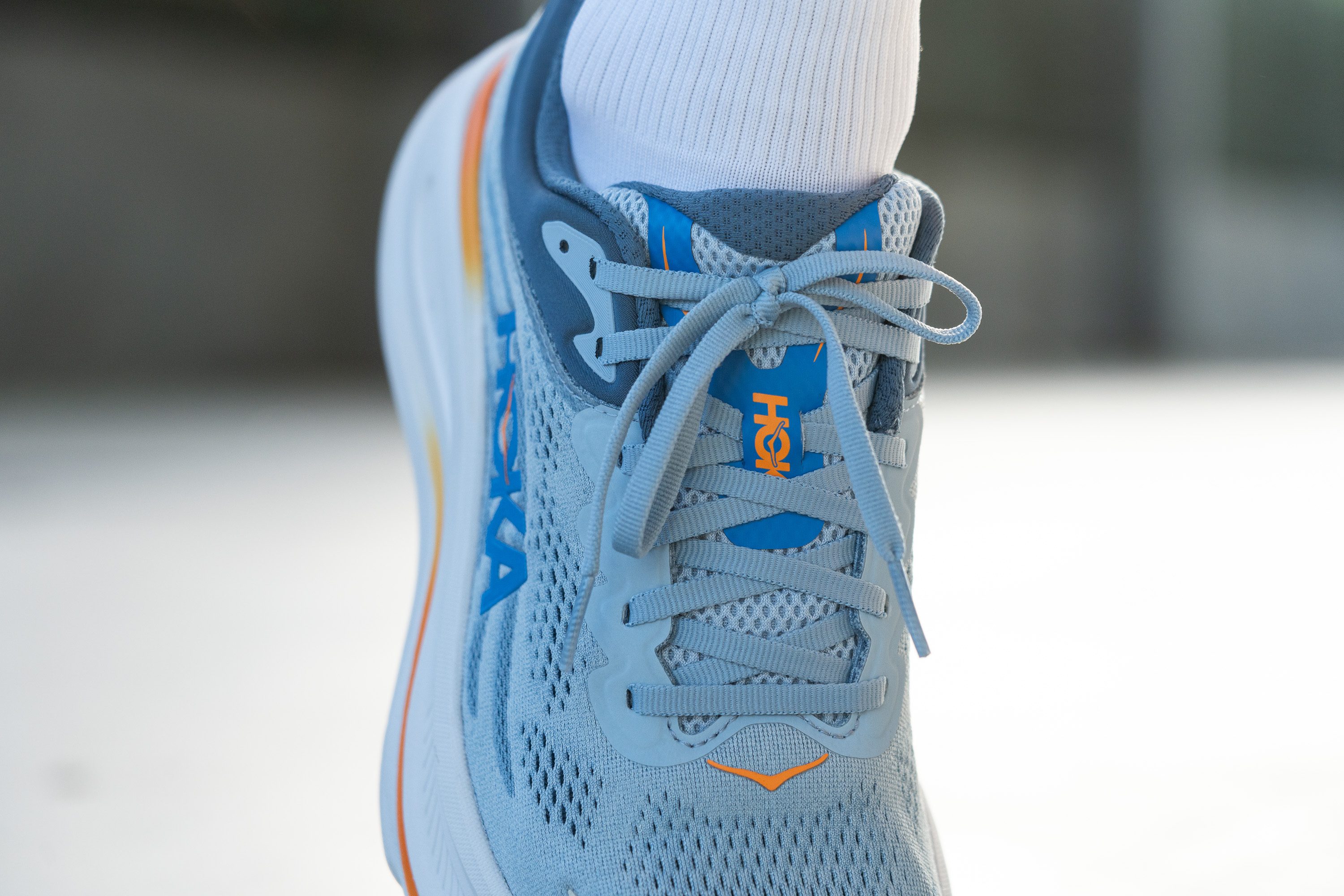
We measured a total thickness of 9.0 mm, which guarantees no one will miss out on comfort here. Additionally, we appreciated the flat laces and the extra eyelet—perfect for securing a runner’s knot if needed.
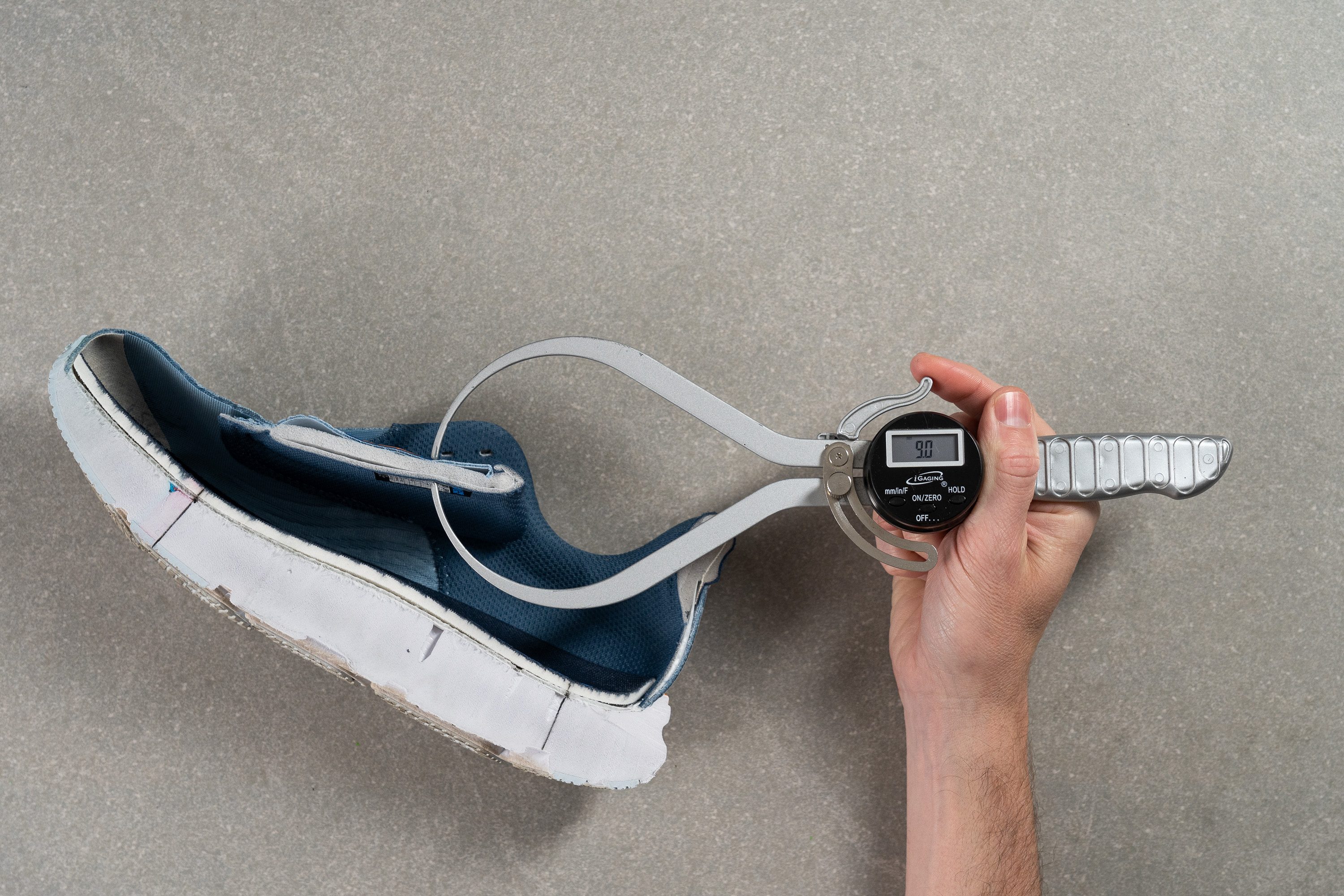
| Hoka Bondi 9 | 9.0 mm |
| Average | 5.8 mm |
Tongue: gusset type
We discovered that the tongue isn’t attached to the sides, which we found slightly inconvenient. While this isn’t a dealbreaker for a slow-paced, comfort-loaded shoe with a thick, ultra-cushioned tongue, a semi-gusseted design would have felt more reasonable at this price.

| Hoka Bondi 9 | None |
Heel tab
As is the case with most Hoka training shoes, the heel features the iconic swallowtail design—reducing pressure on the Achilles tendon while also providing a convenient grip for pulling the shoe on when needed.
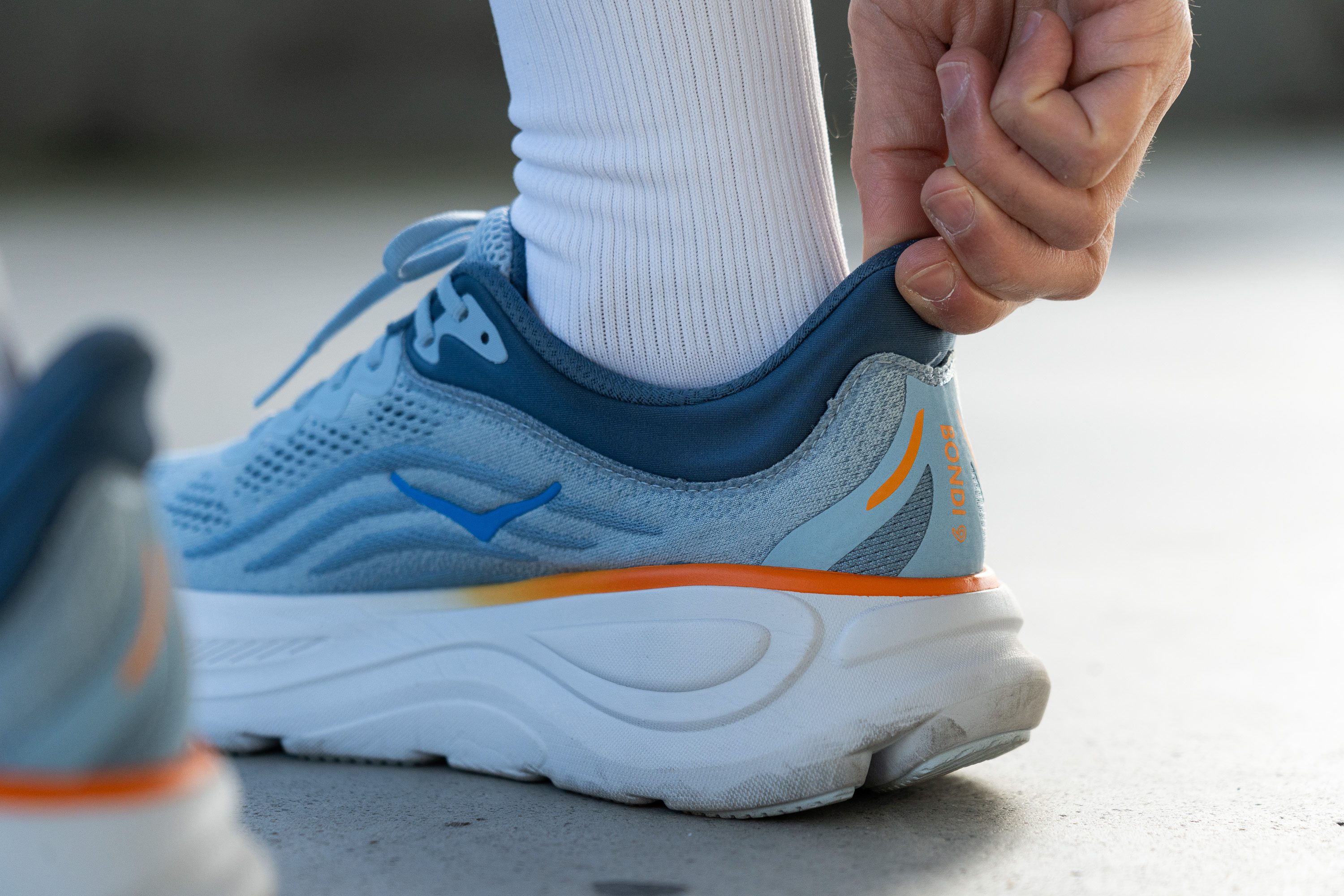
| Hoka Bondi 9 | Extended heel collar |

